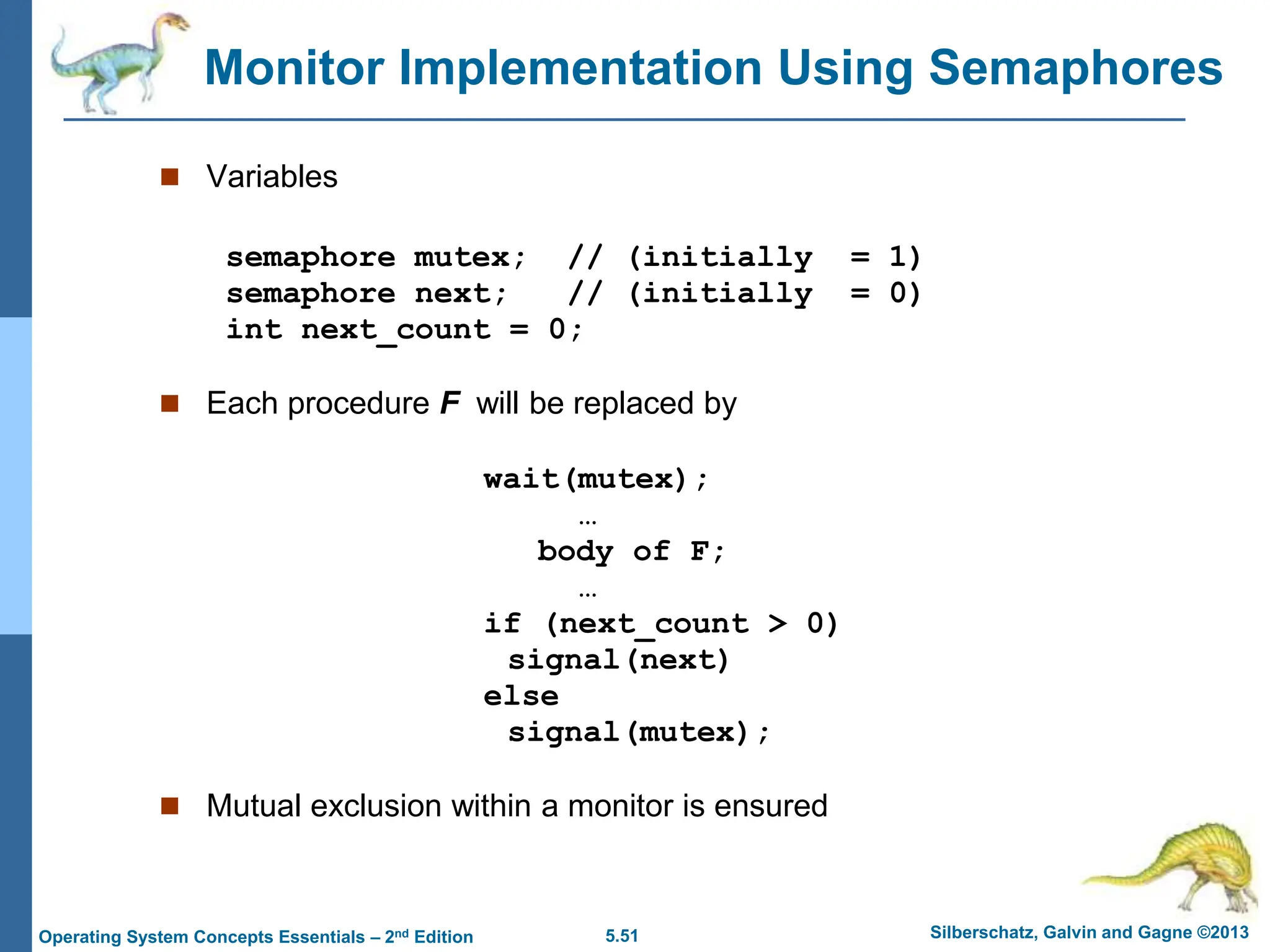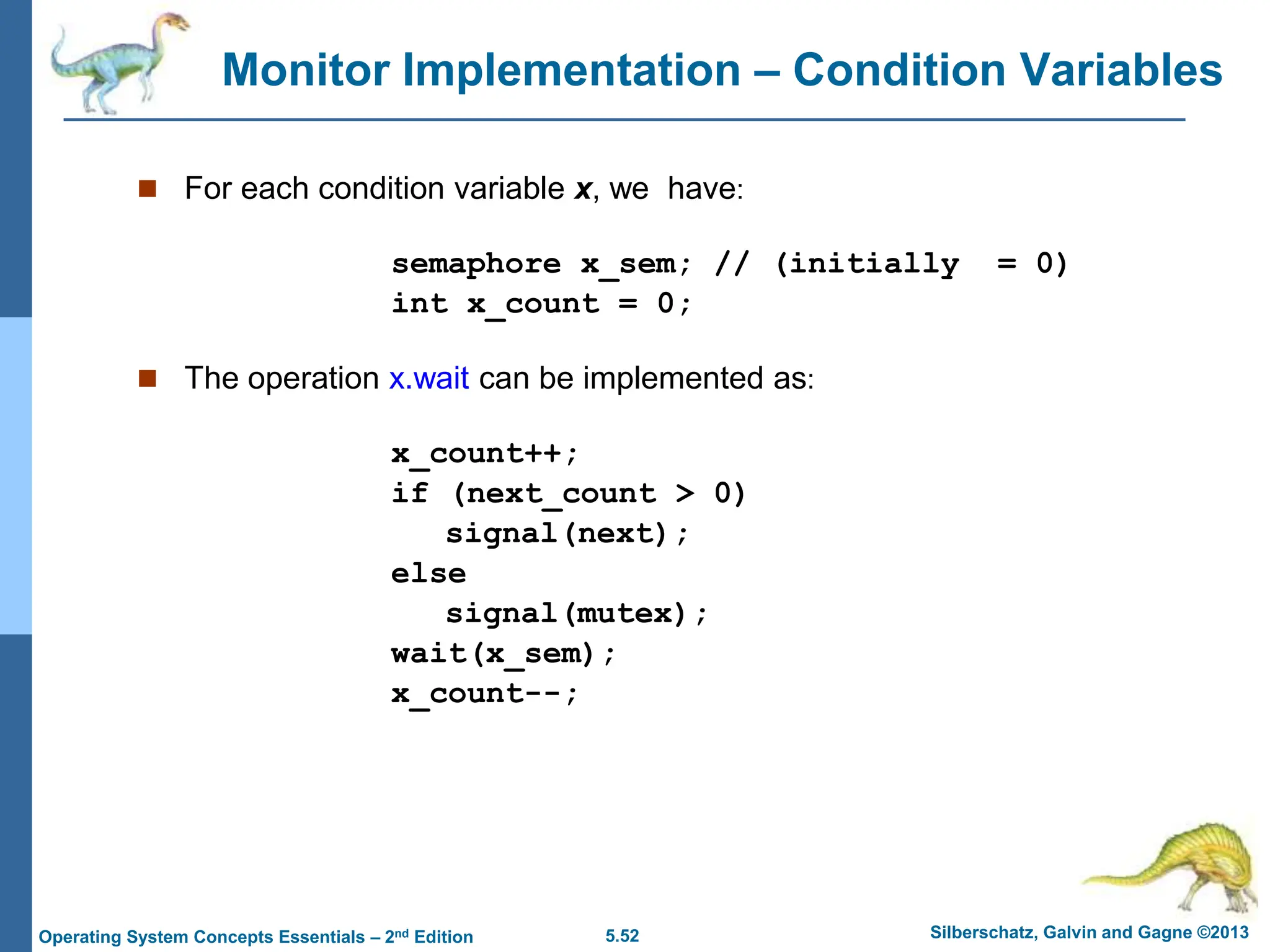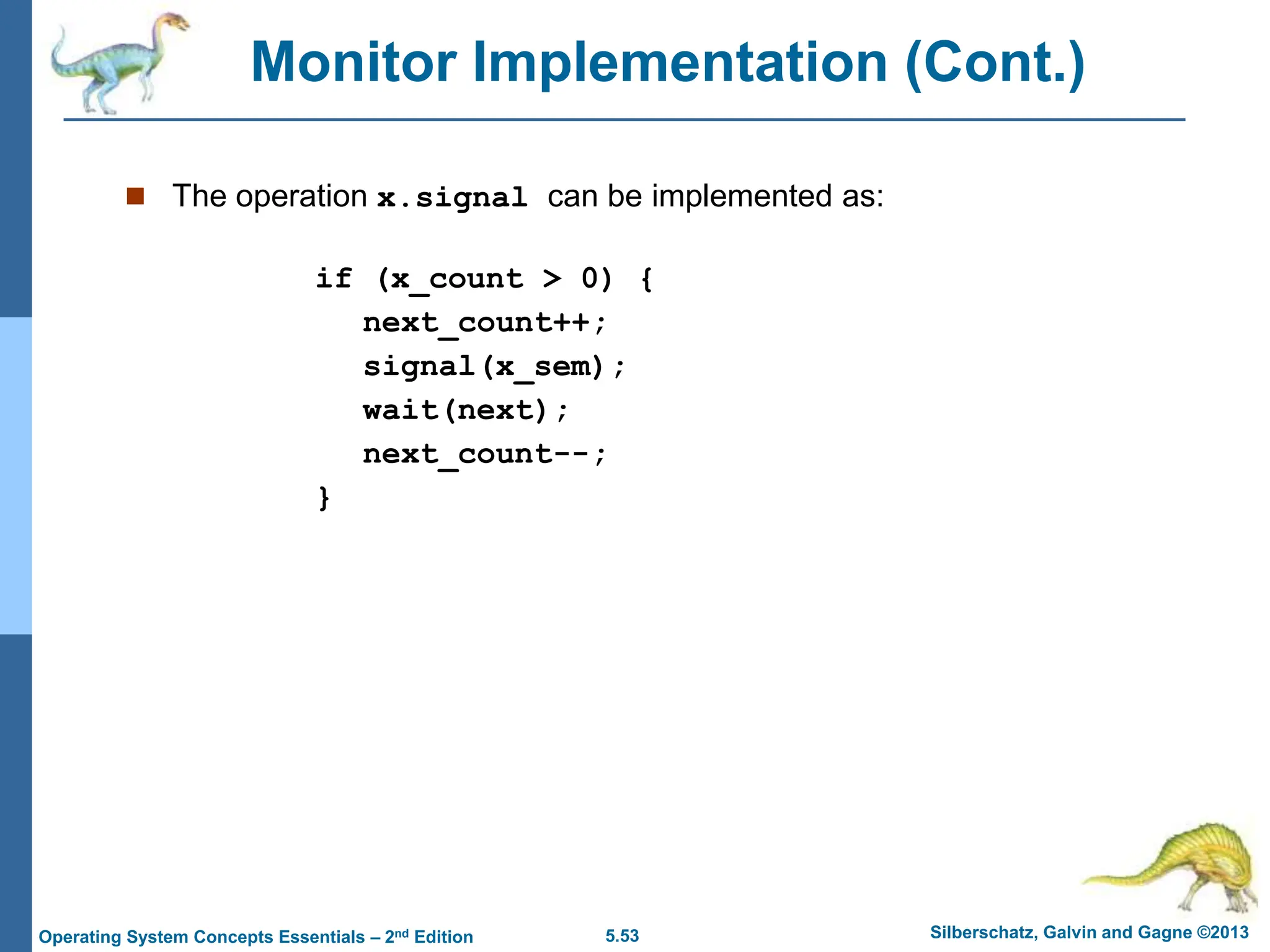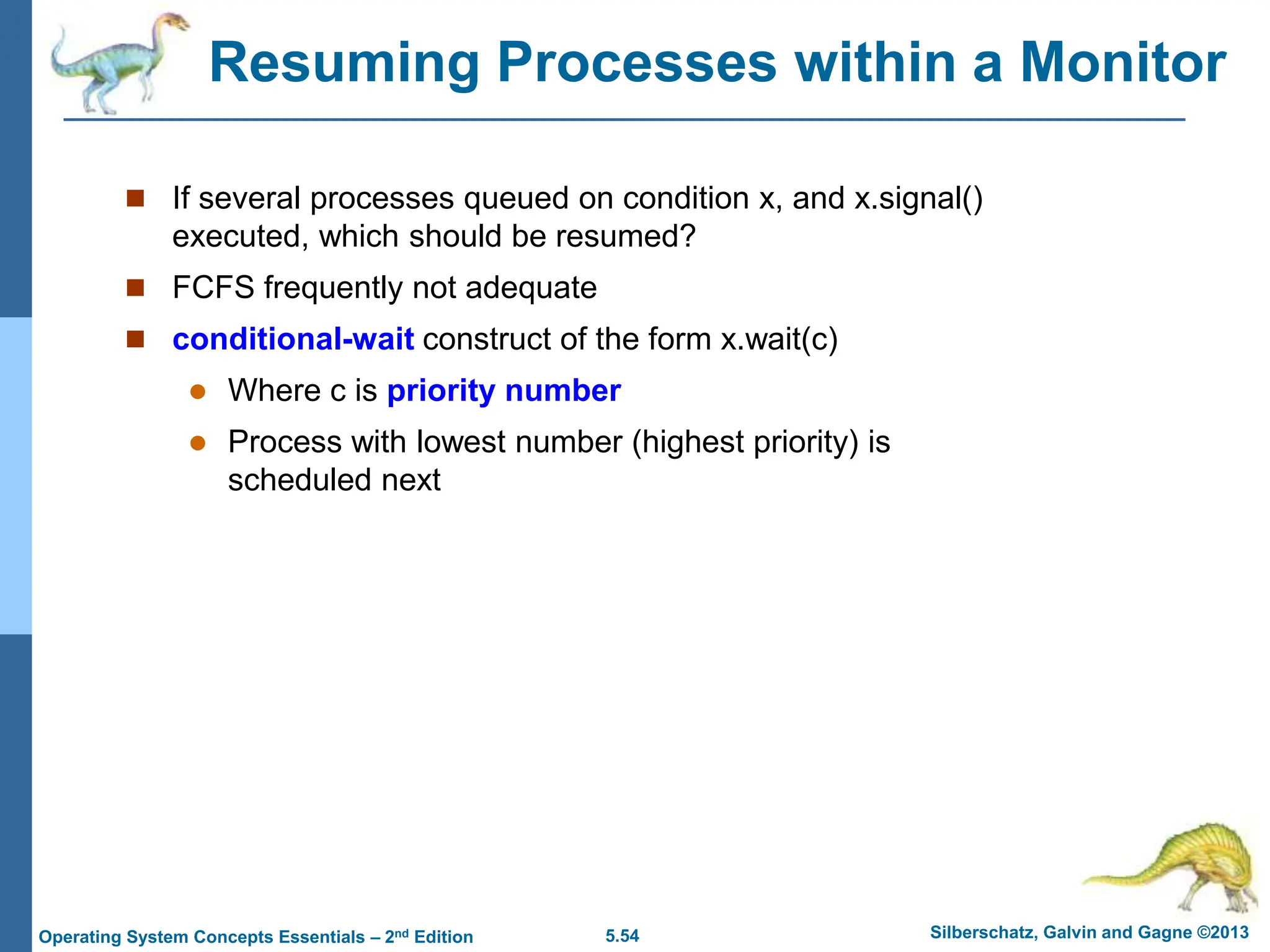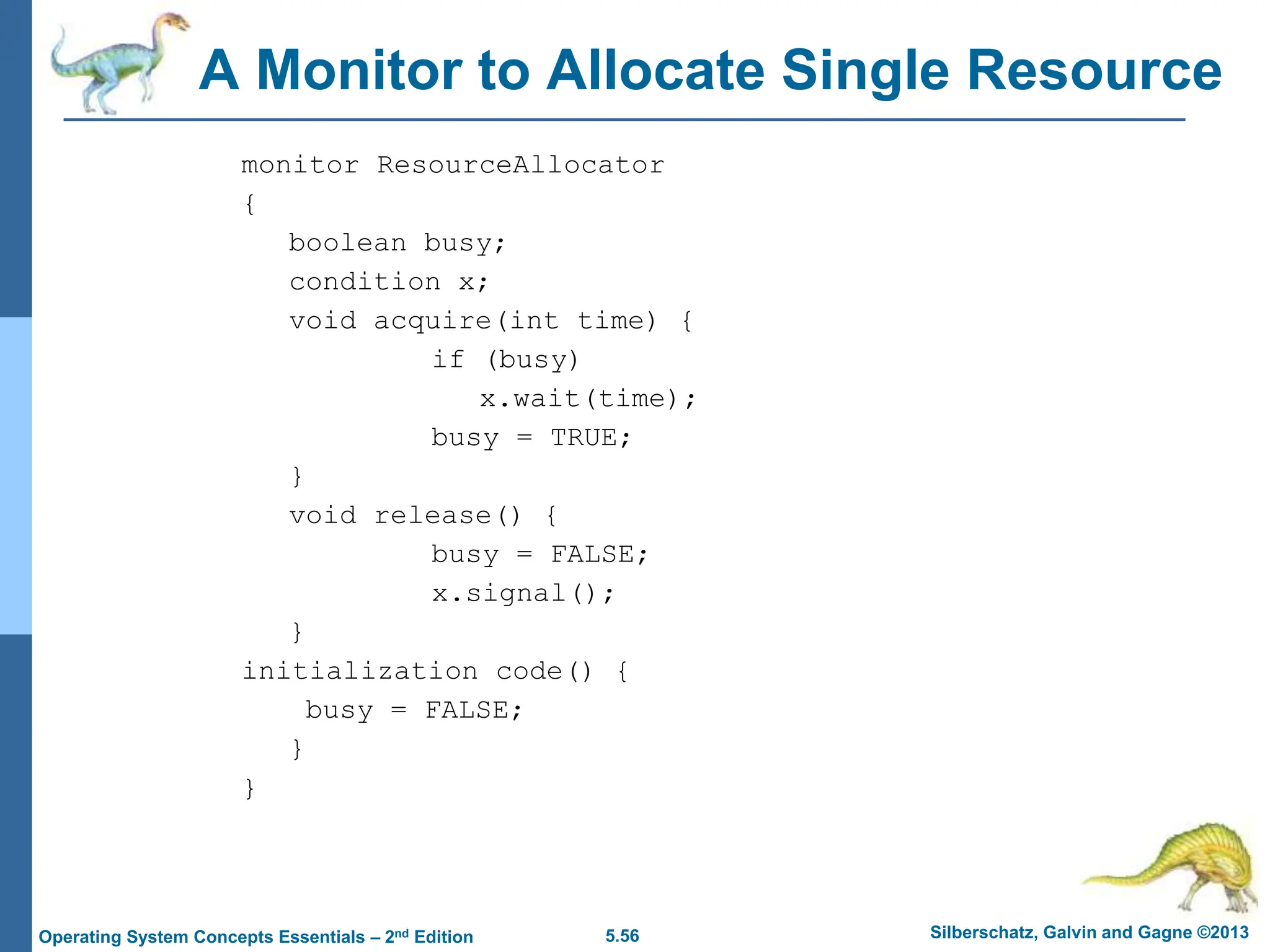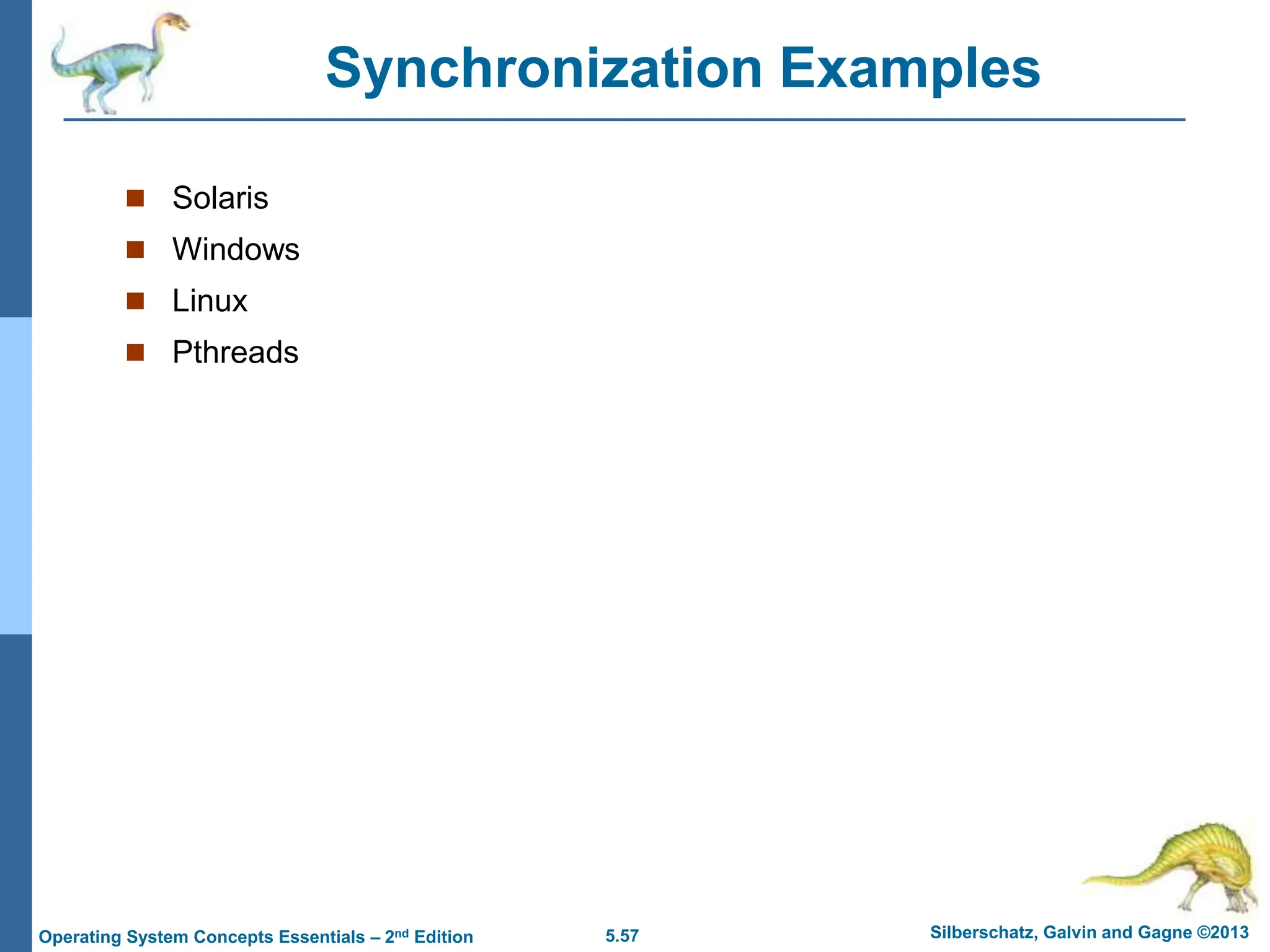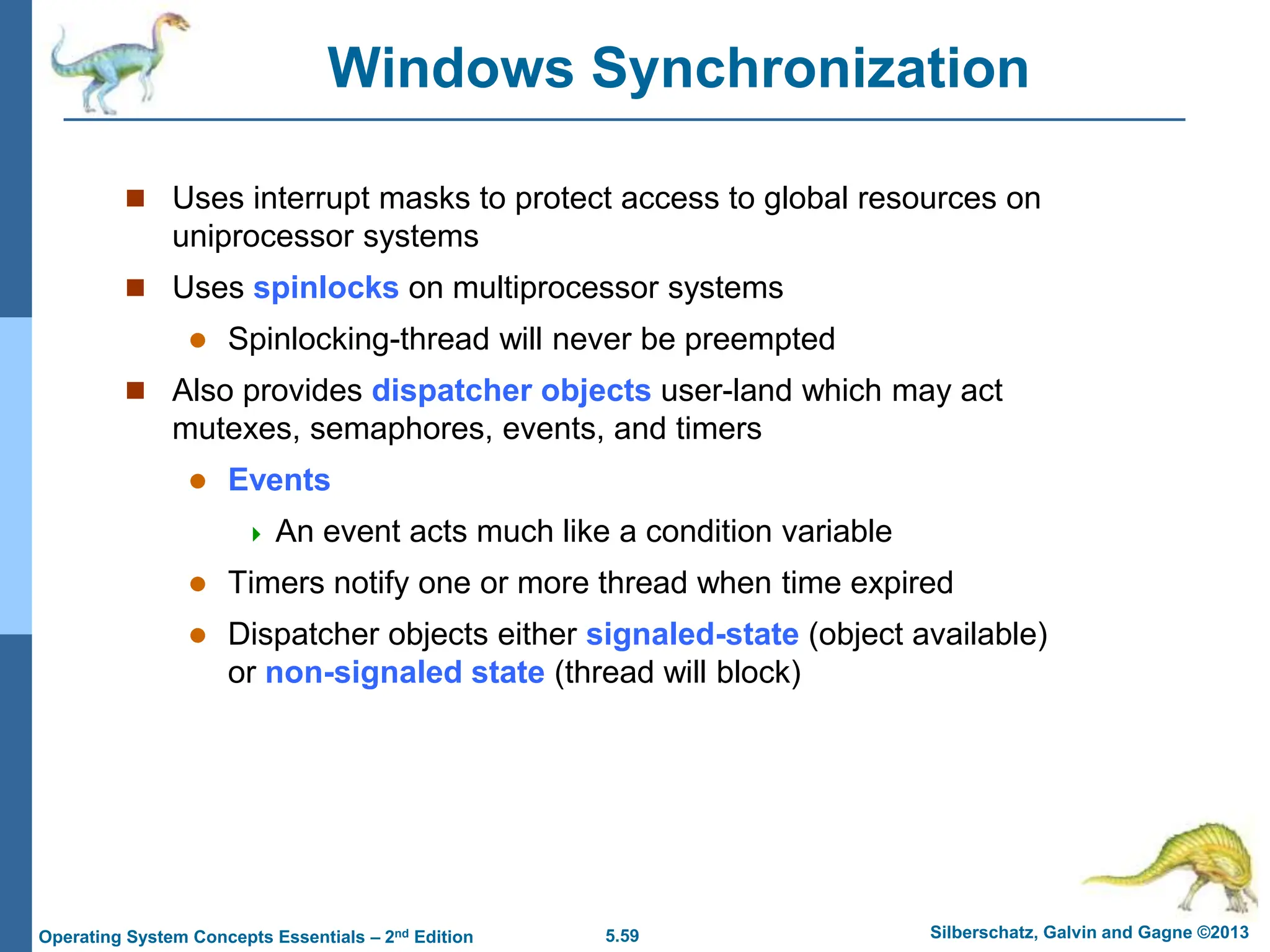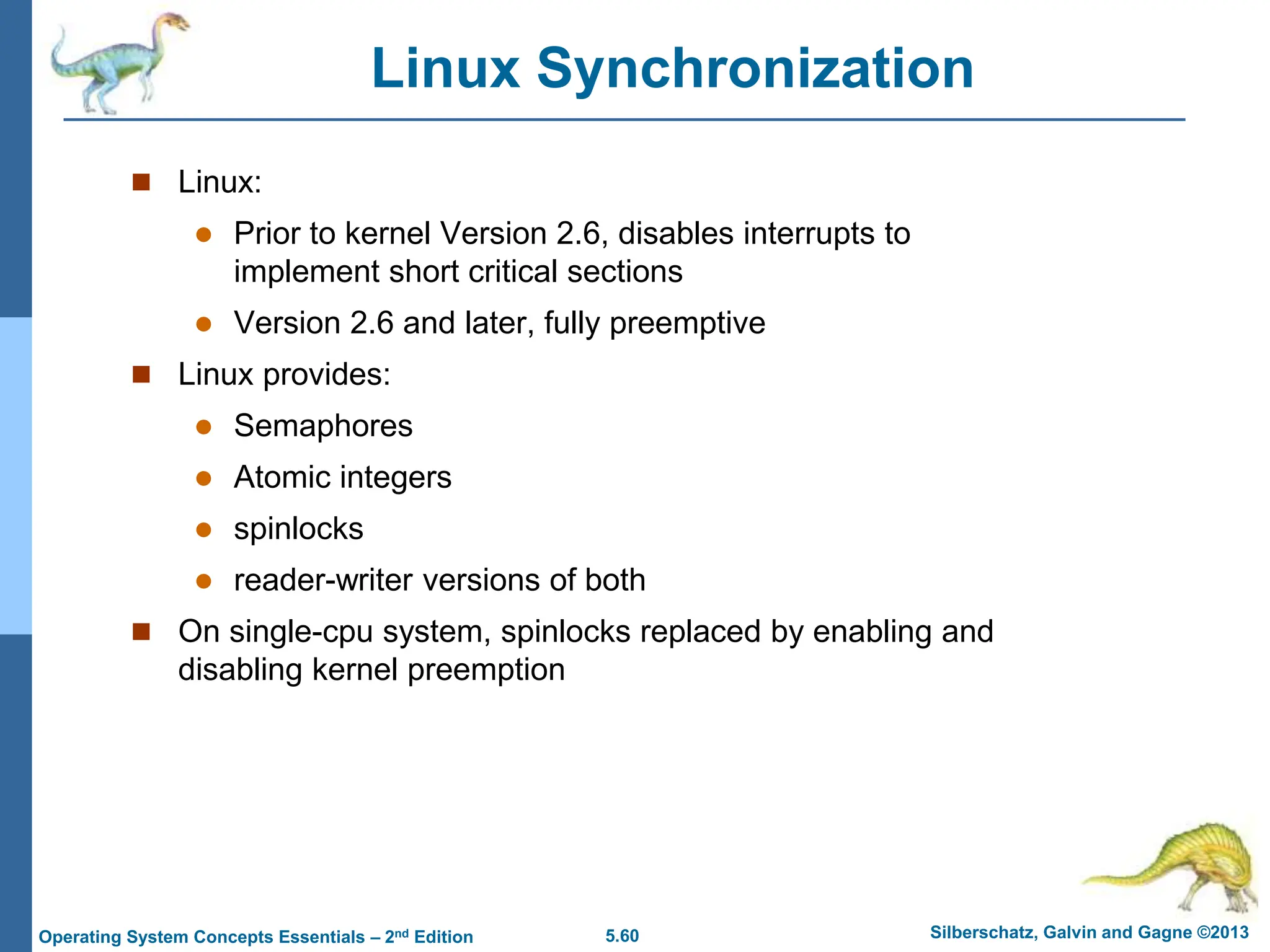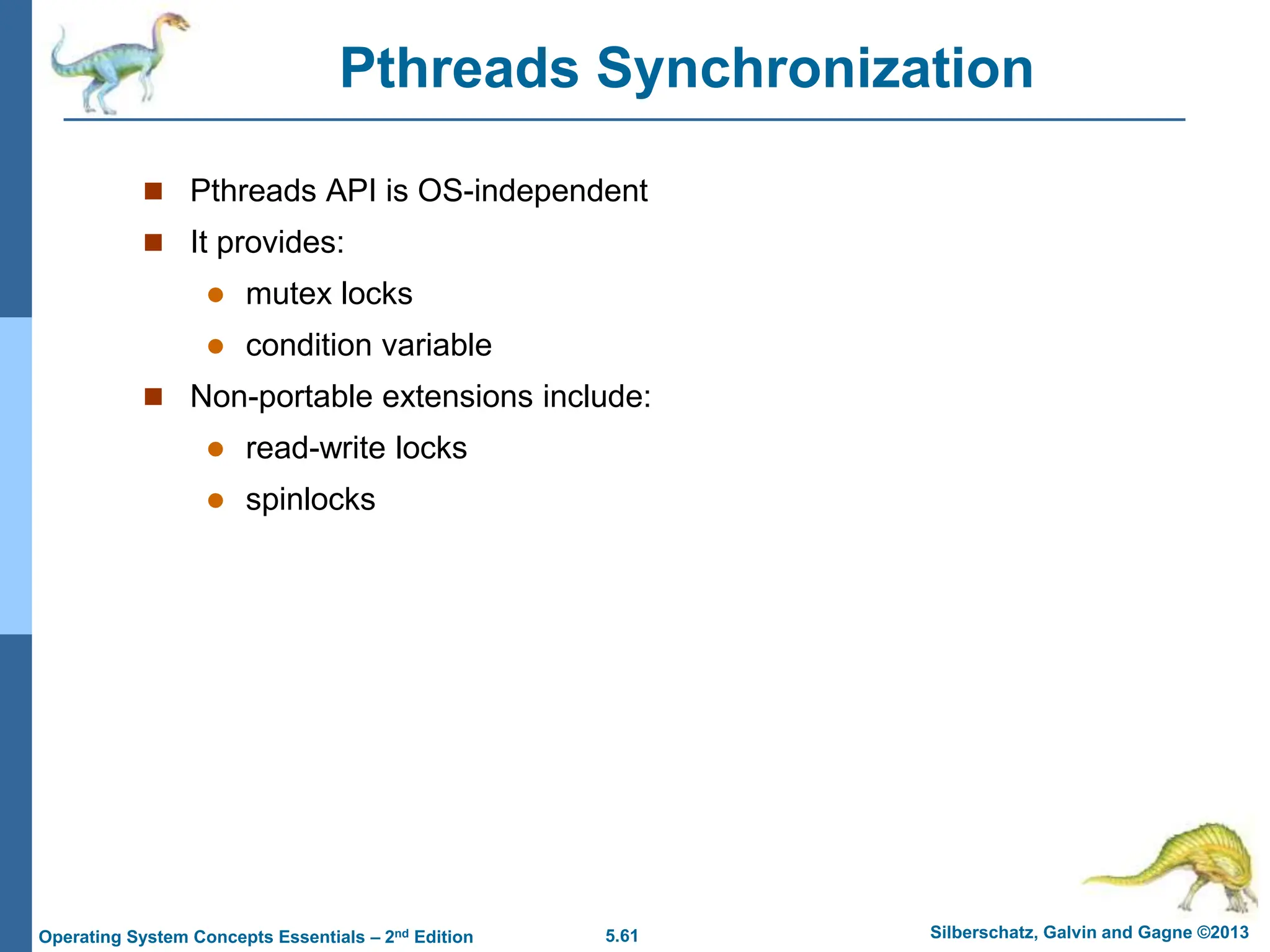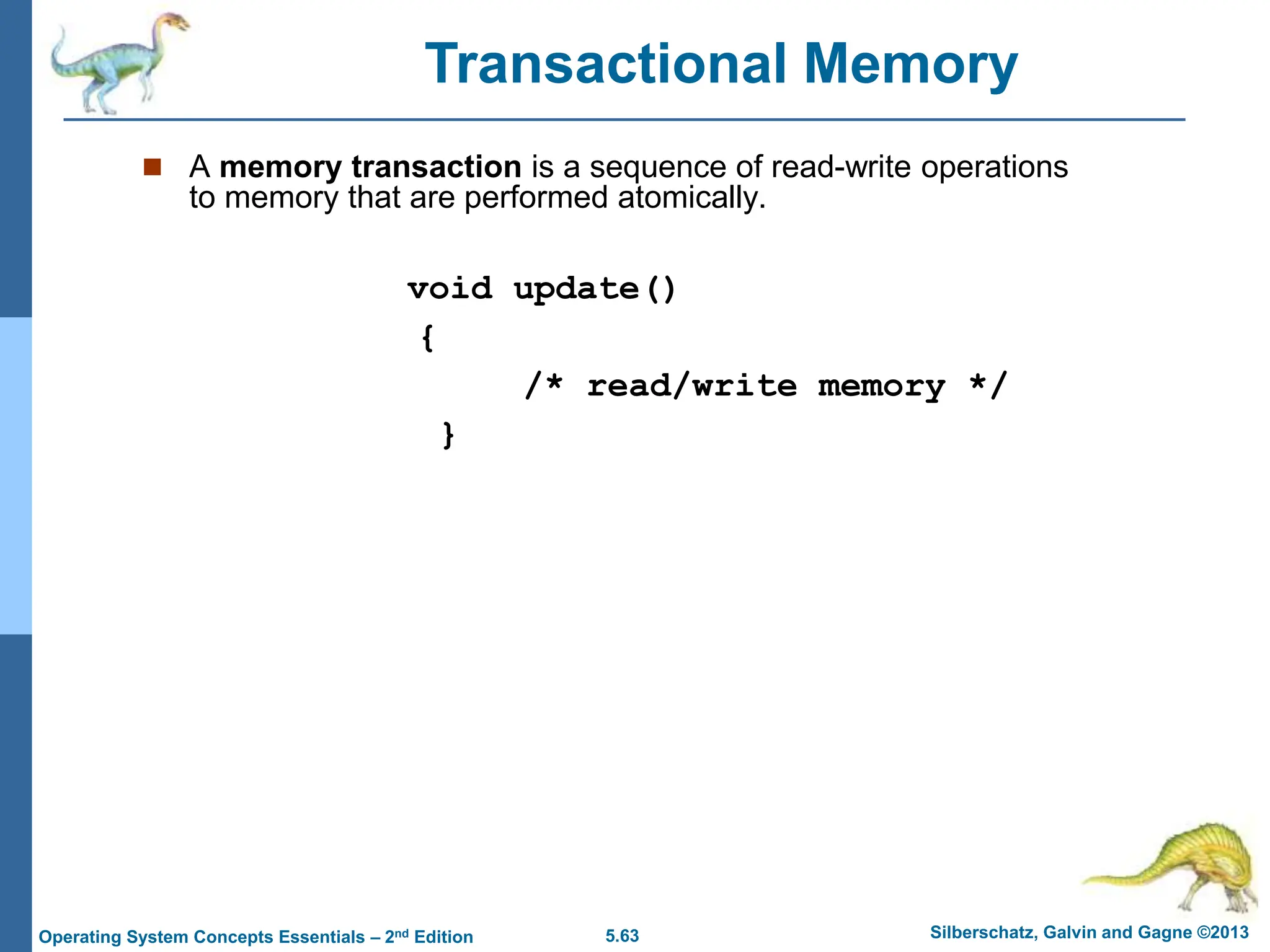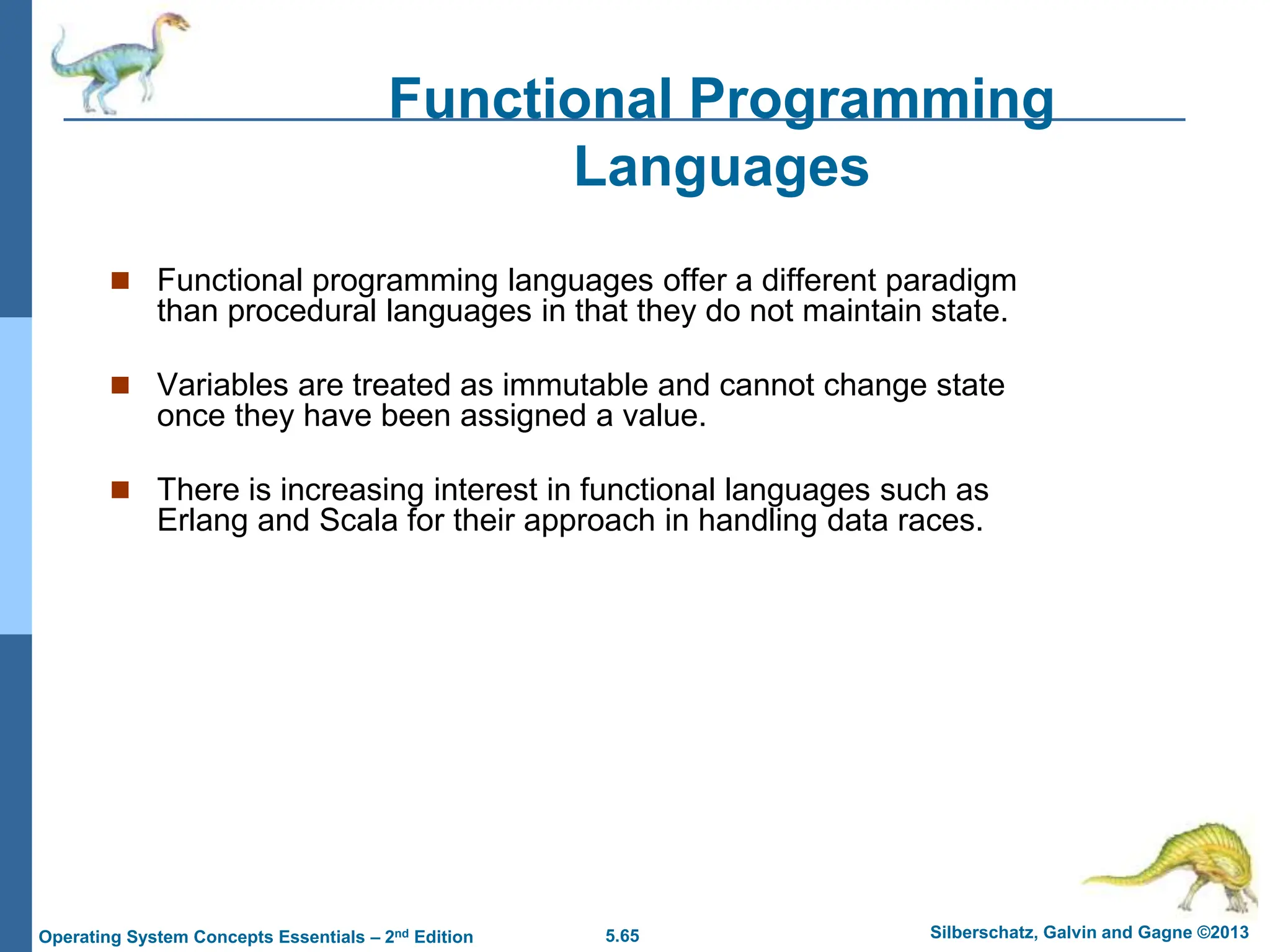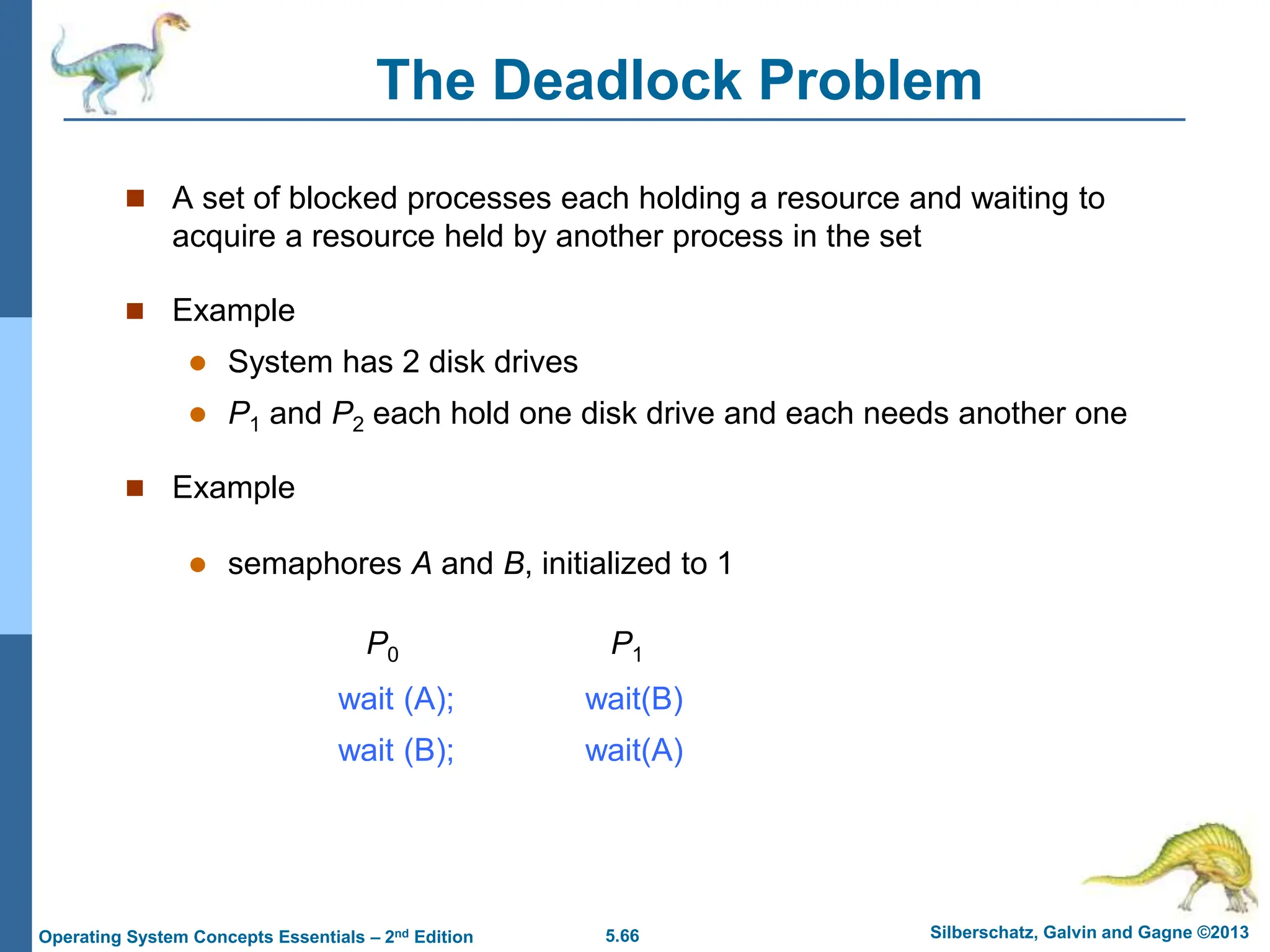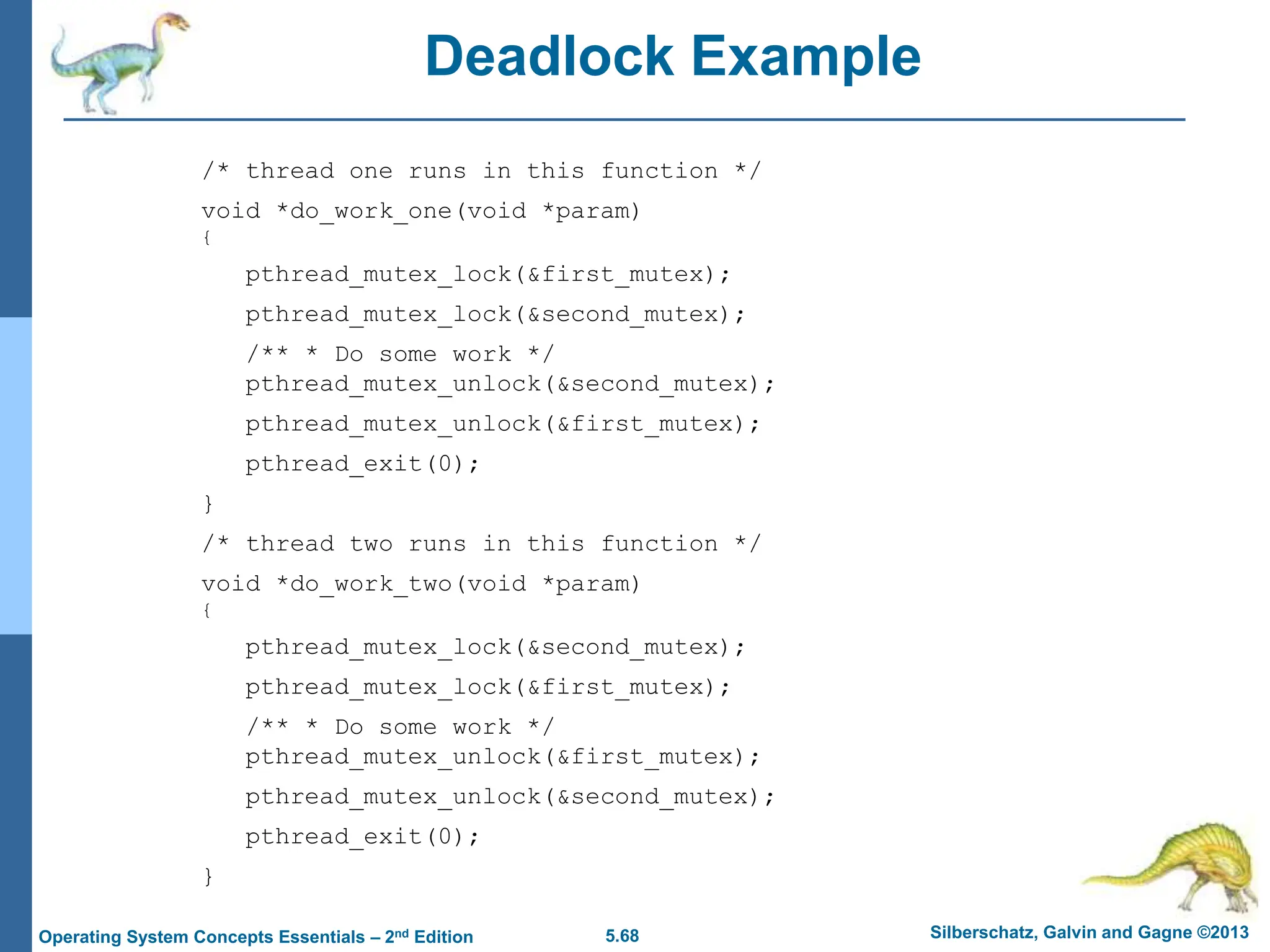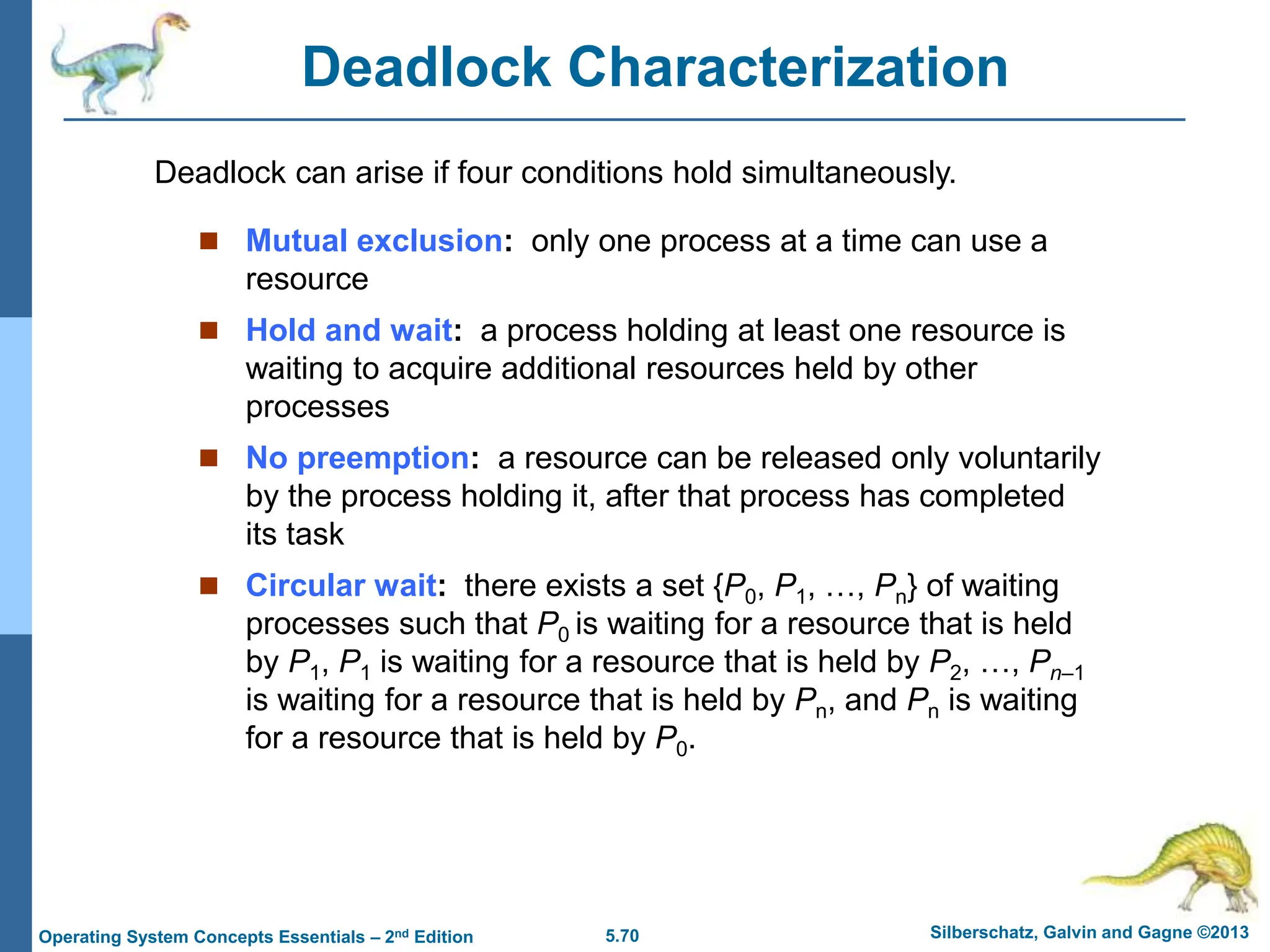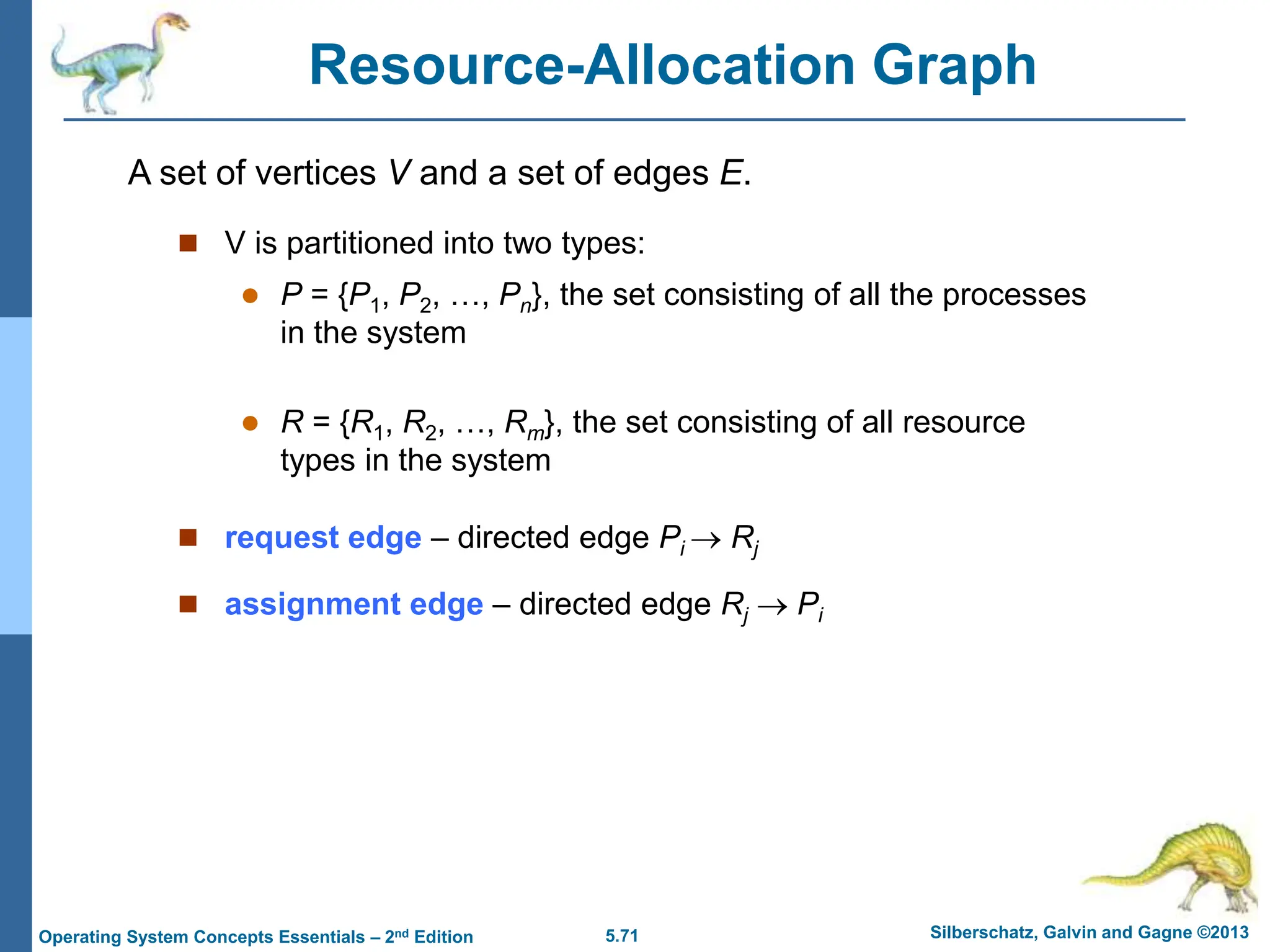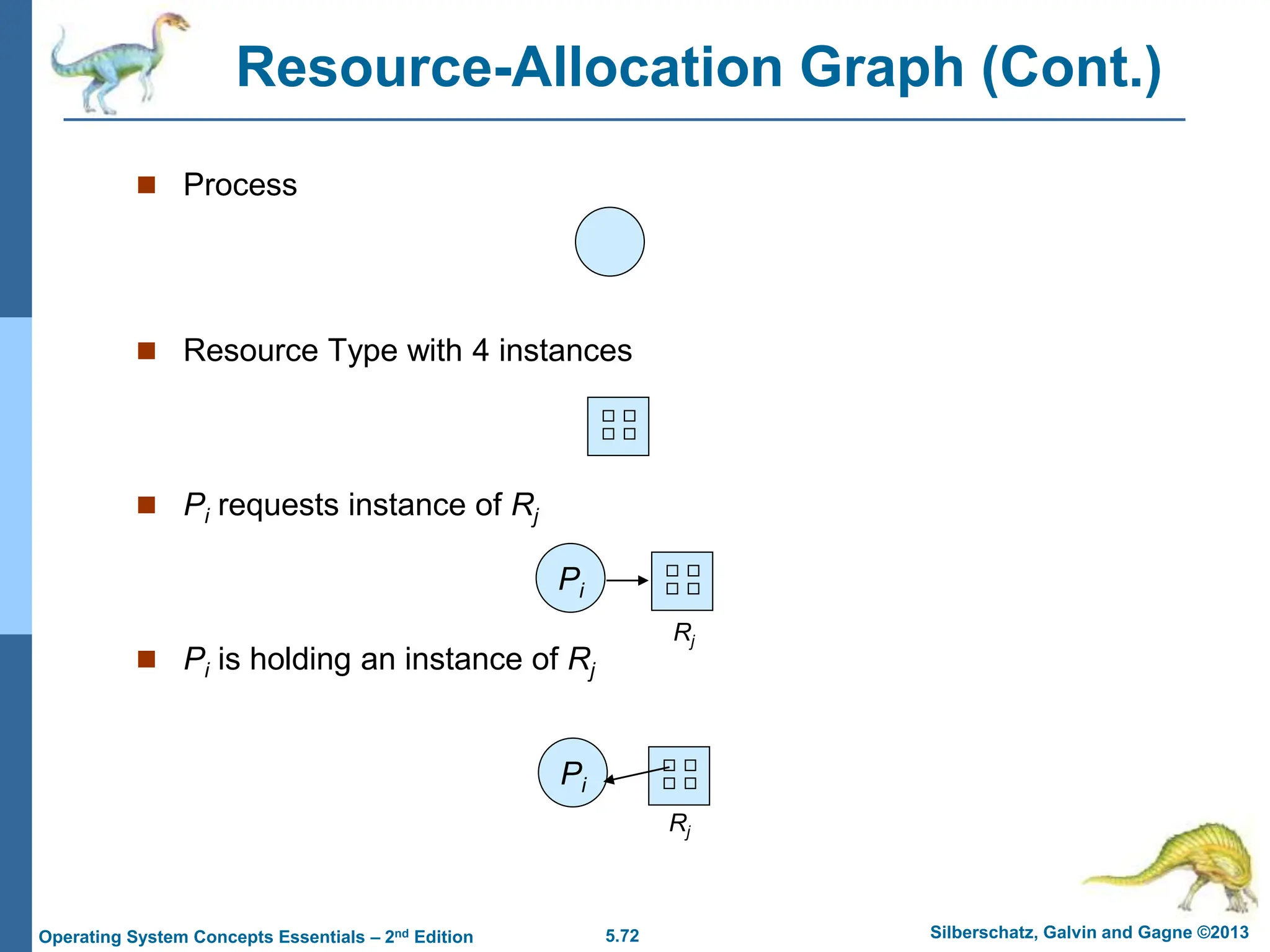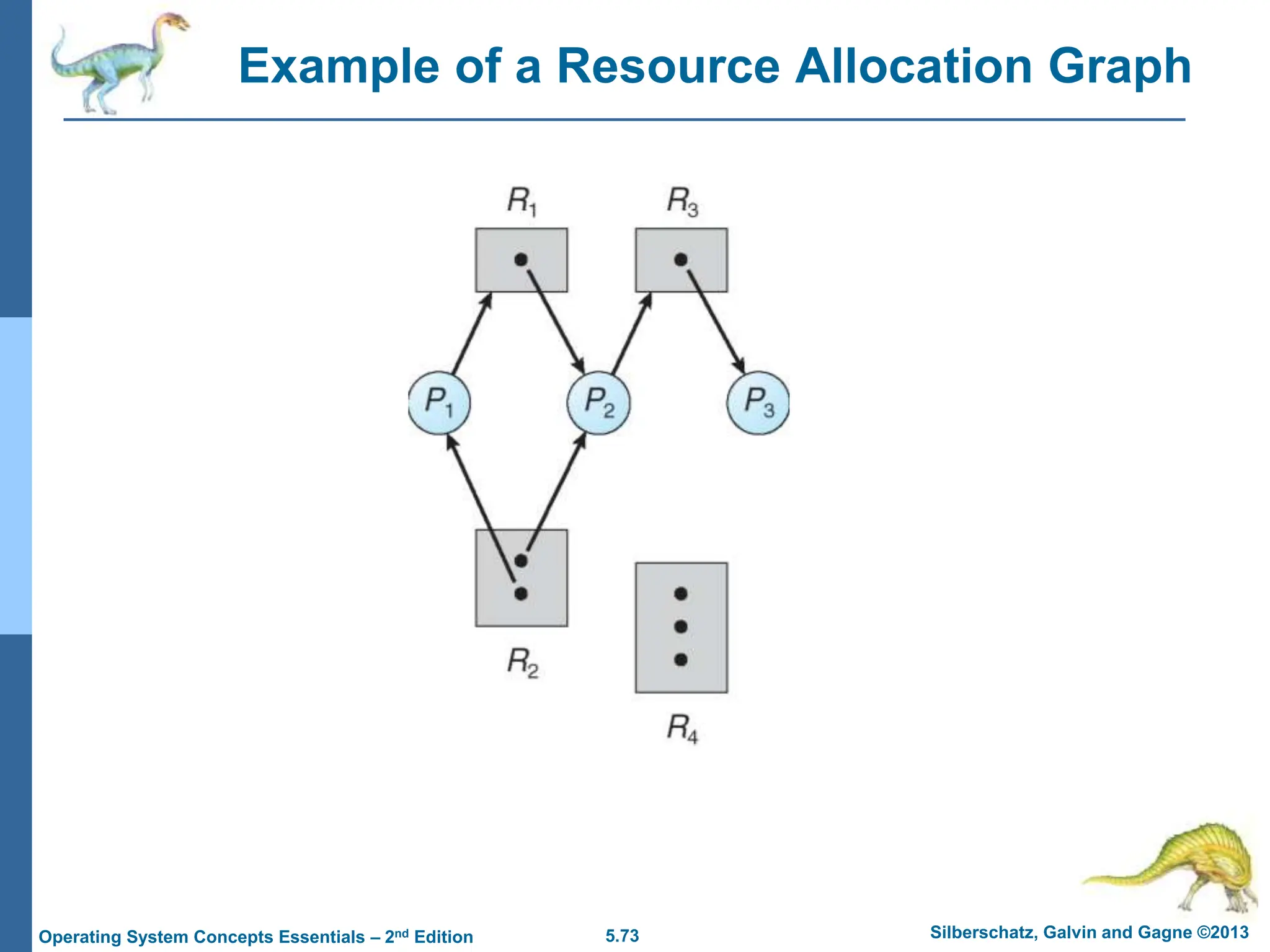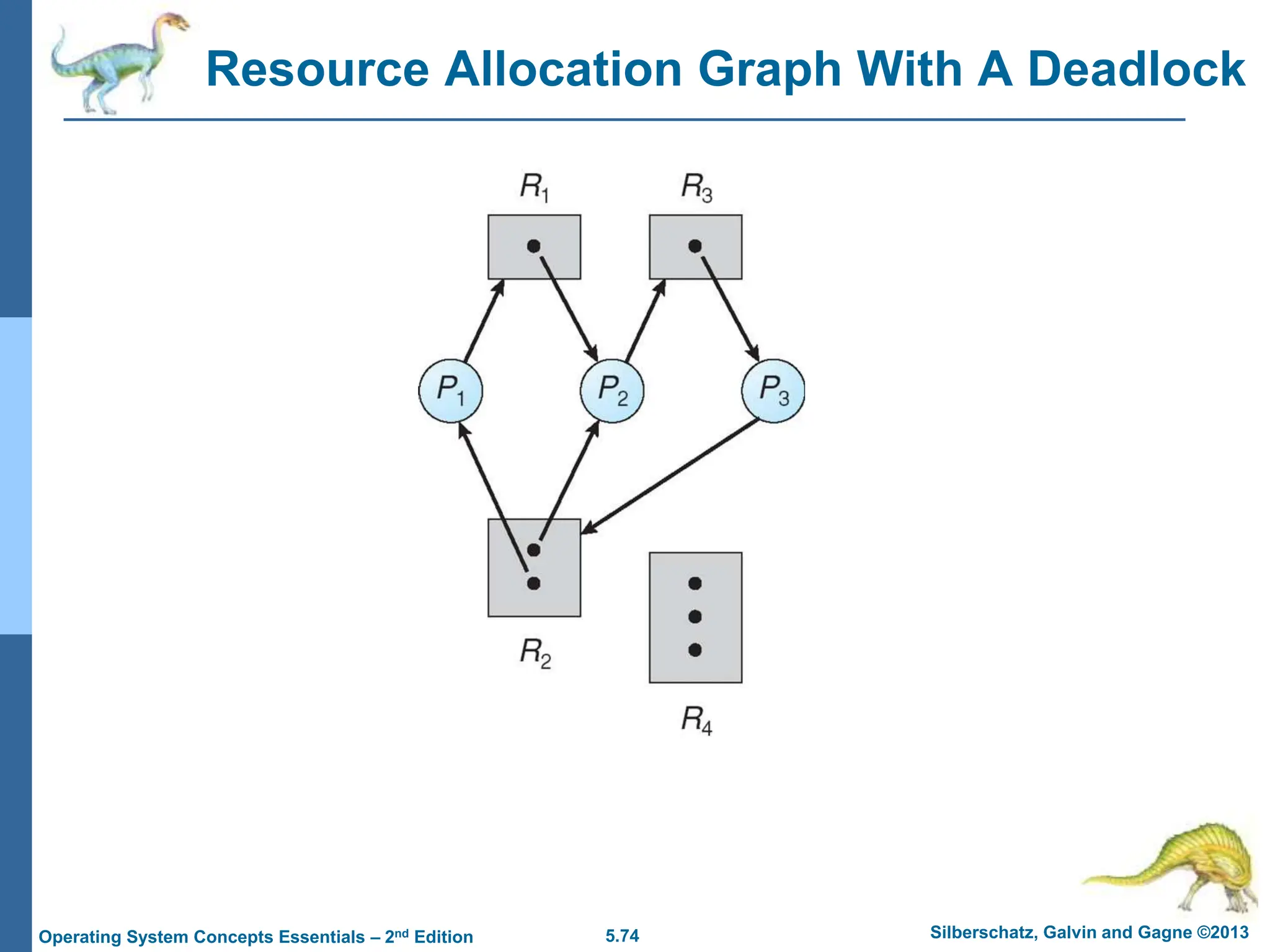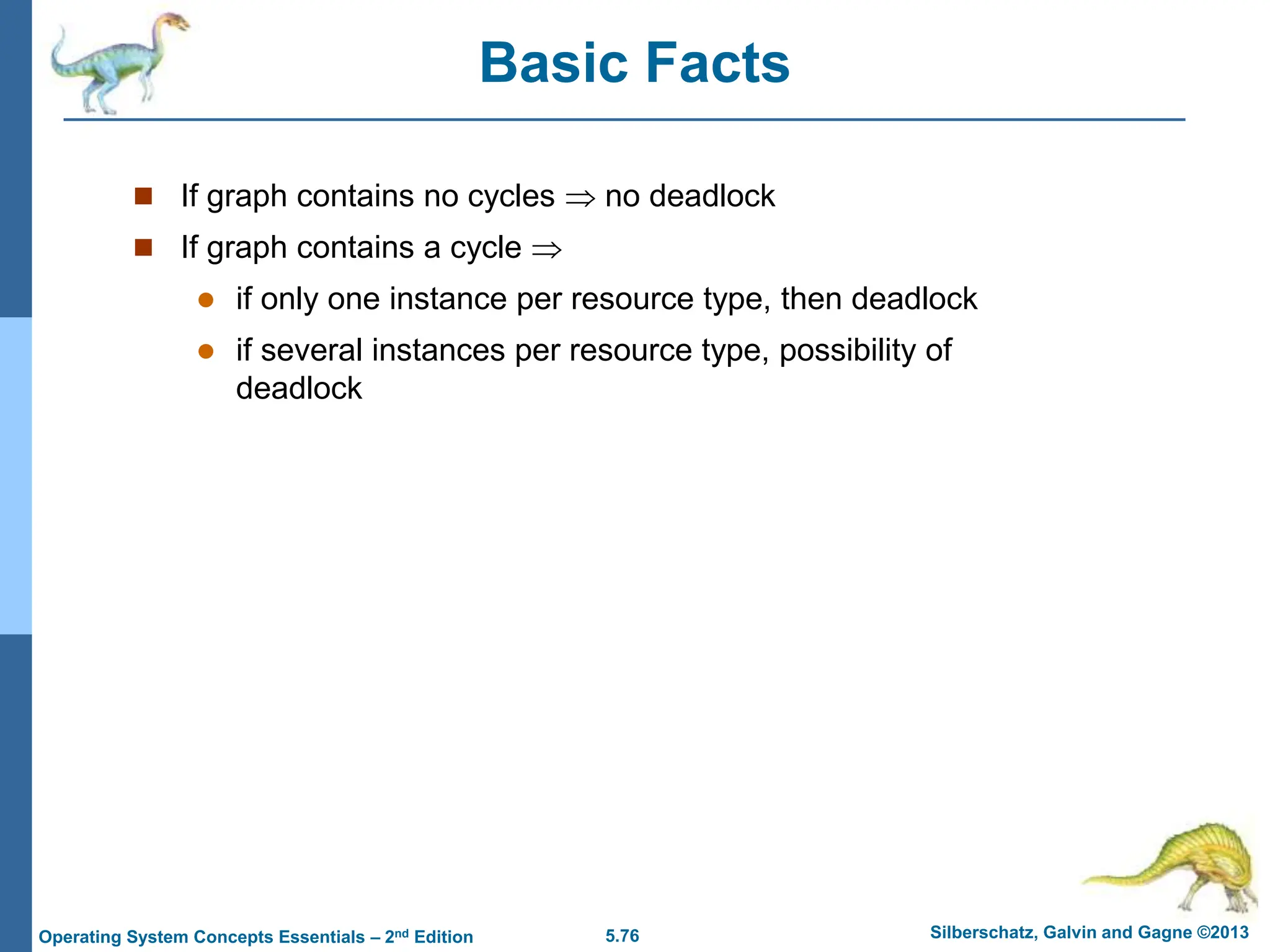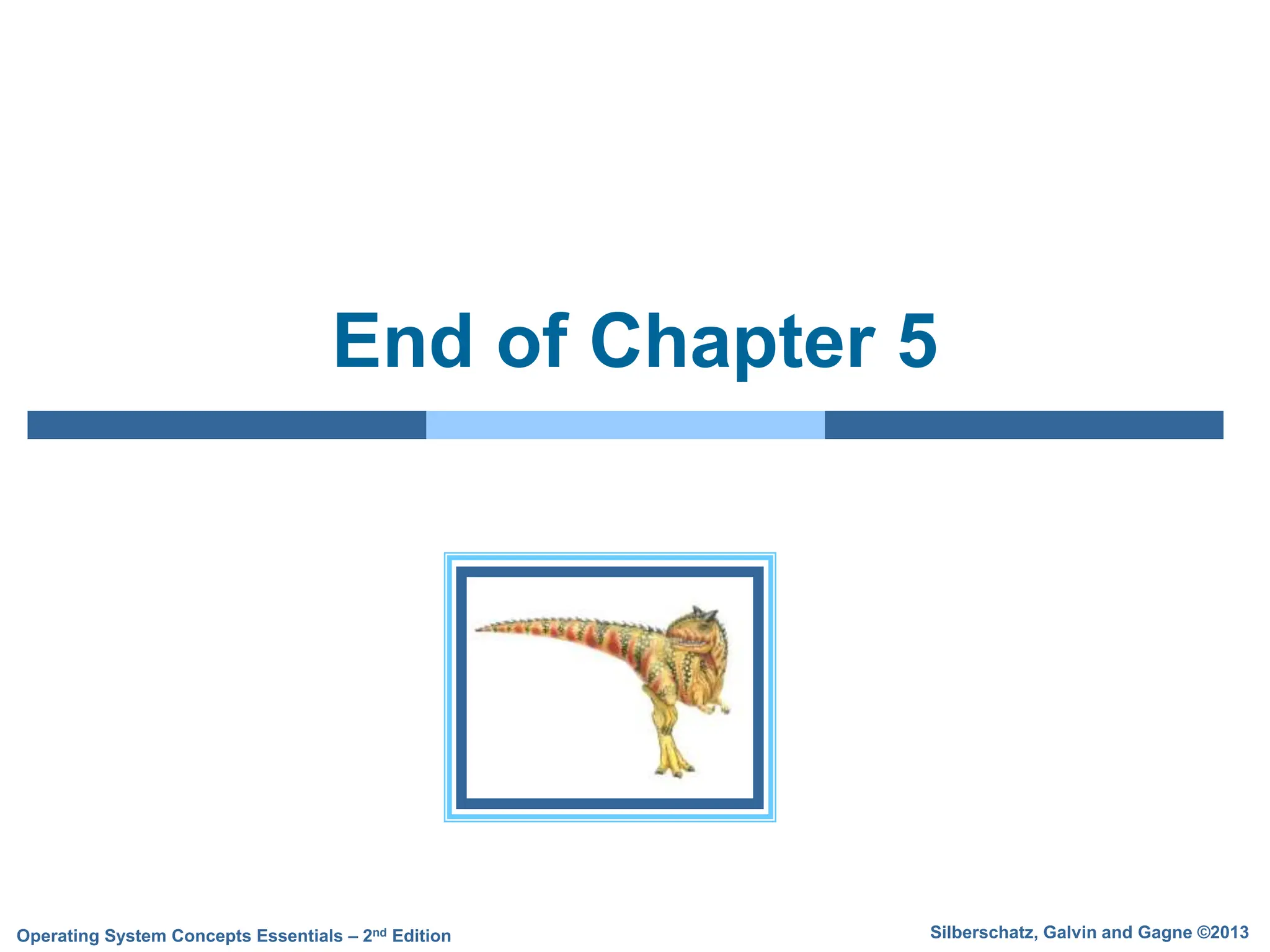The document discusses process synchronization, focusing on the critical-section problem and its solutions to ensure data consistency in concurrent processing. It covers various mechanisms including mutex locks, semaphores, and classical synchronization problems like the producer-consumer and readers-writers problems. The material also emphasizes algorithmic descriptions, hardware support, and implications such as deadlock and starvation in process synchronization.
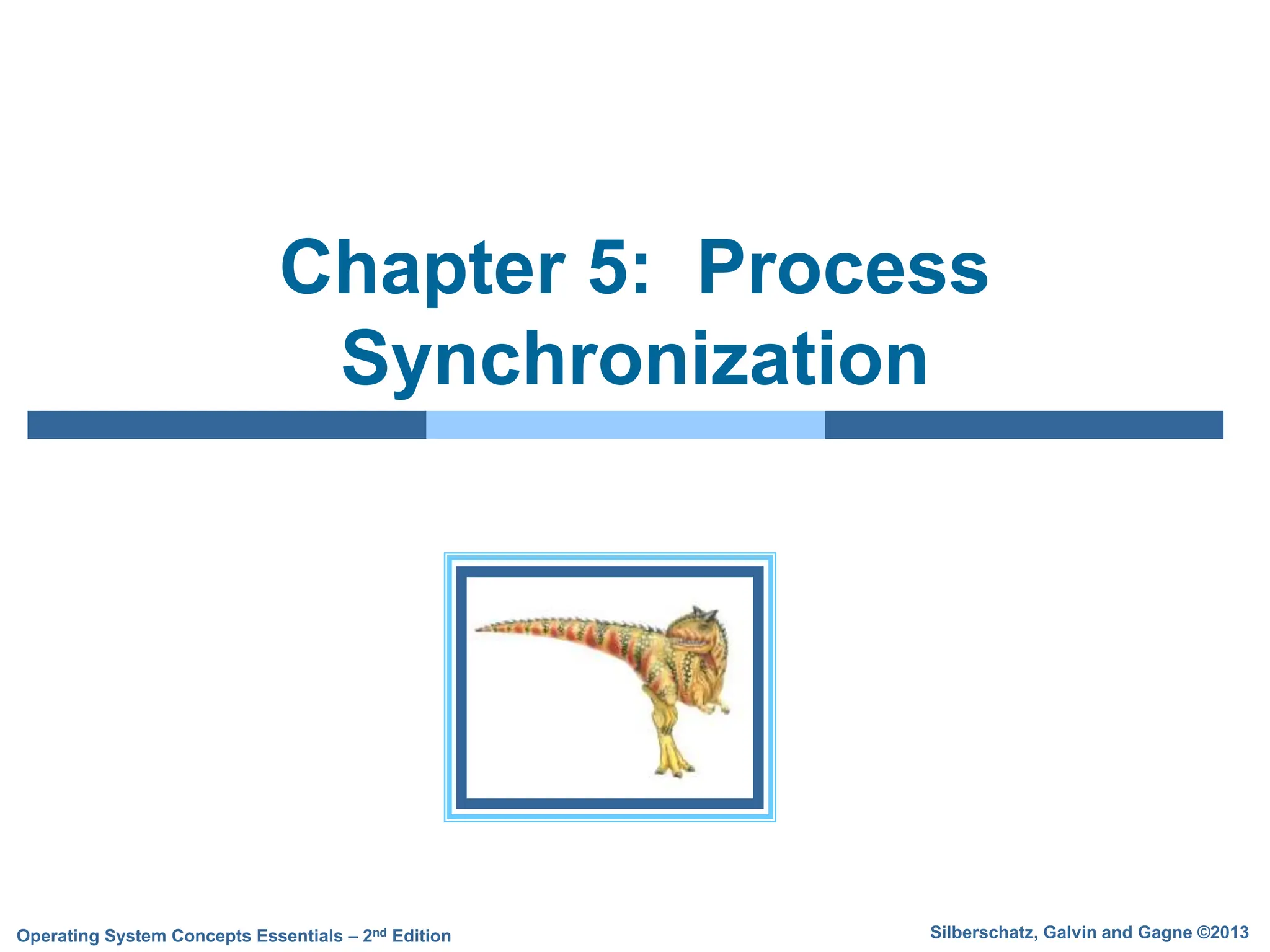
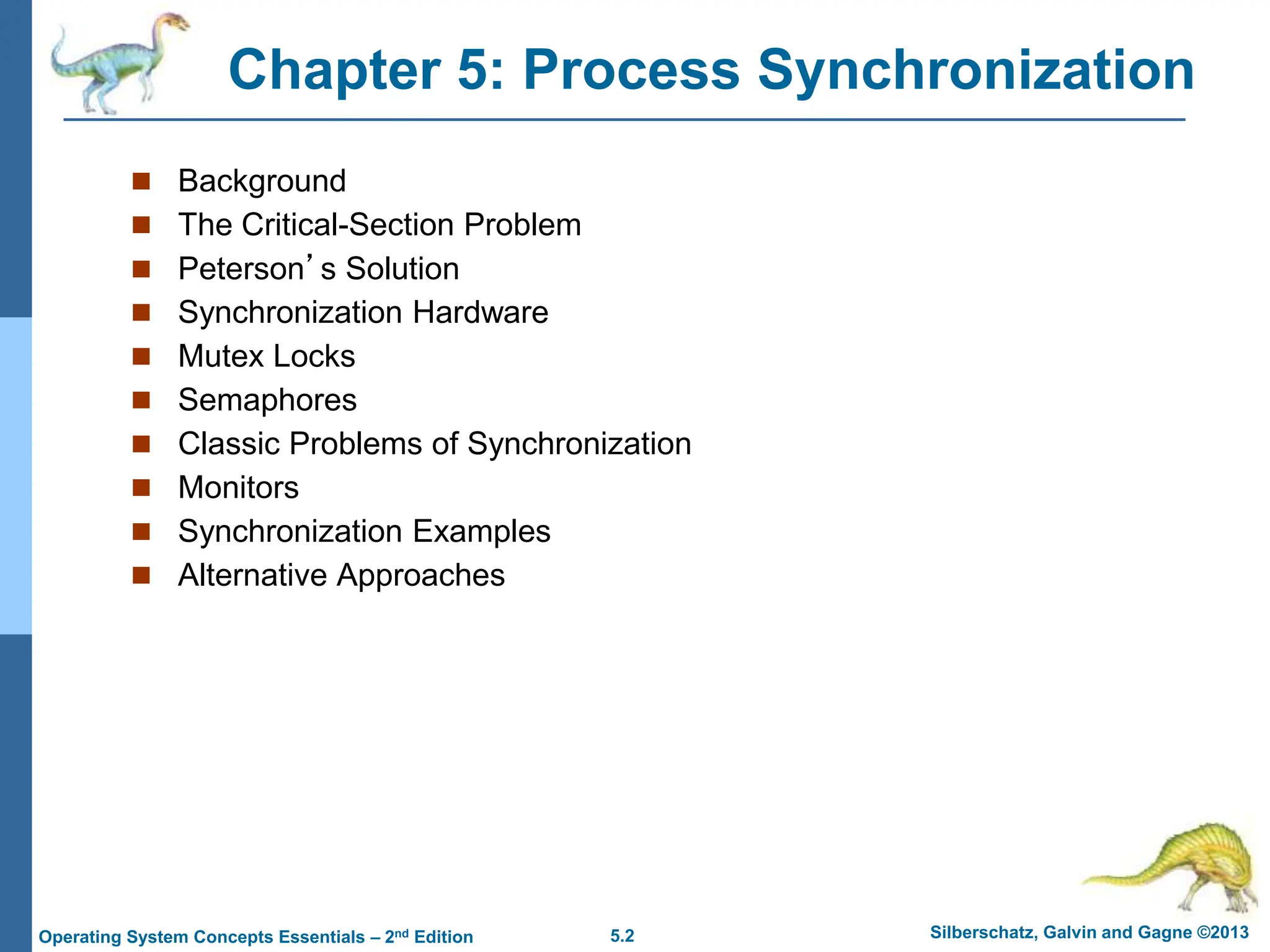

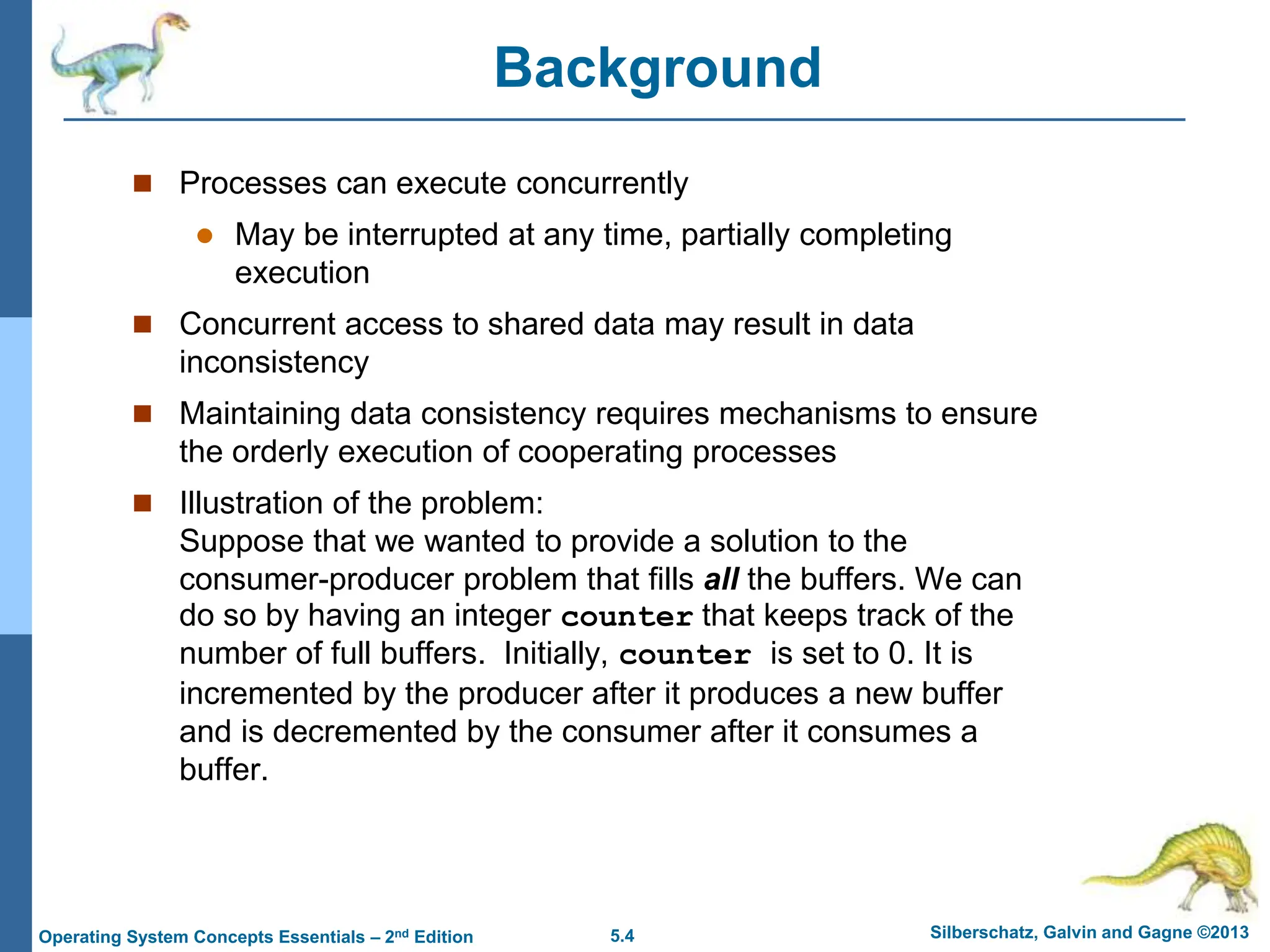
![5.5 Silberschatz, Galvin and Gagne ©2013
Operating System Concepts Essentials – 2nd Edition
Producer
while (true) {
/* produce an item in next produced */
while (counter == BUFFER_SIZE) ;
/* do nothing */
buffer[in] = next_produced;
in = (in + 1) % BUFFER_SIZE;
counter++;
}](https://image.slidesharecdn.com/ch5-240227052019-02aebb91/75/ch5-ppt-Operating-System-Ppt-for-ptu-student-5-2048.jpg)
![5.6 Silberschatz, Galvin and Gagne ©2013
Operating System Concepts Essentials – 2nd Edition
Consumer
while (true) {
while (counter == 0)
; /* do nothing */
next_consumed = buffer[out];
out = (out + 1) % BUFFER_SIZE;
counter--;
/* consume the item in next consumed */
}](https://image.slidesharecdn.com/ch5-240227052019-02aebb91/75/ch5-ppt-Operating-System-Ppt-for-ptu-student-6-2048.jpg)
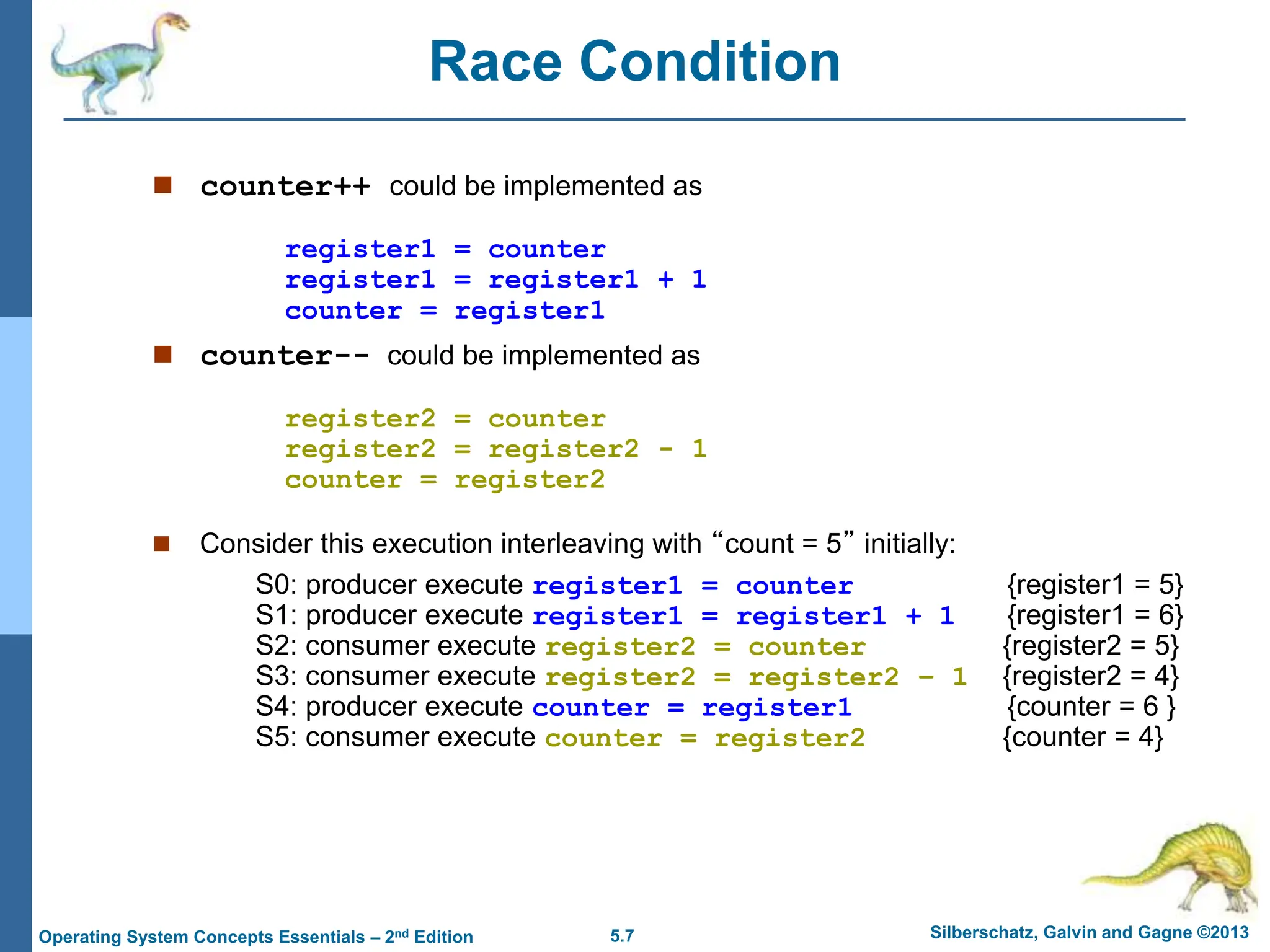
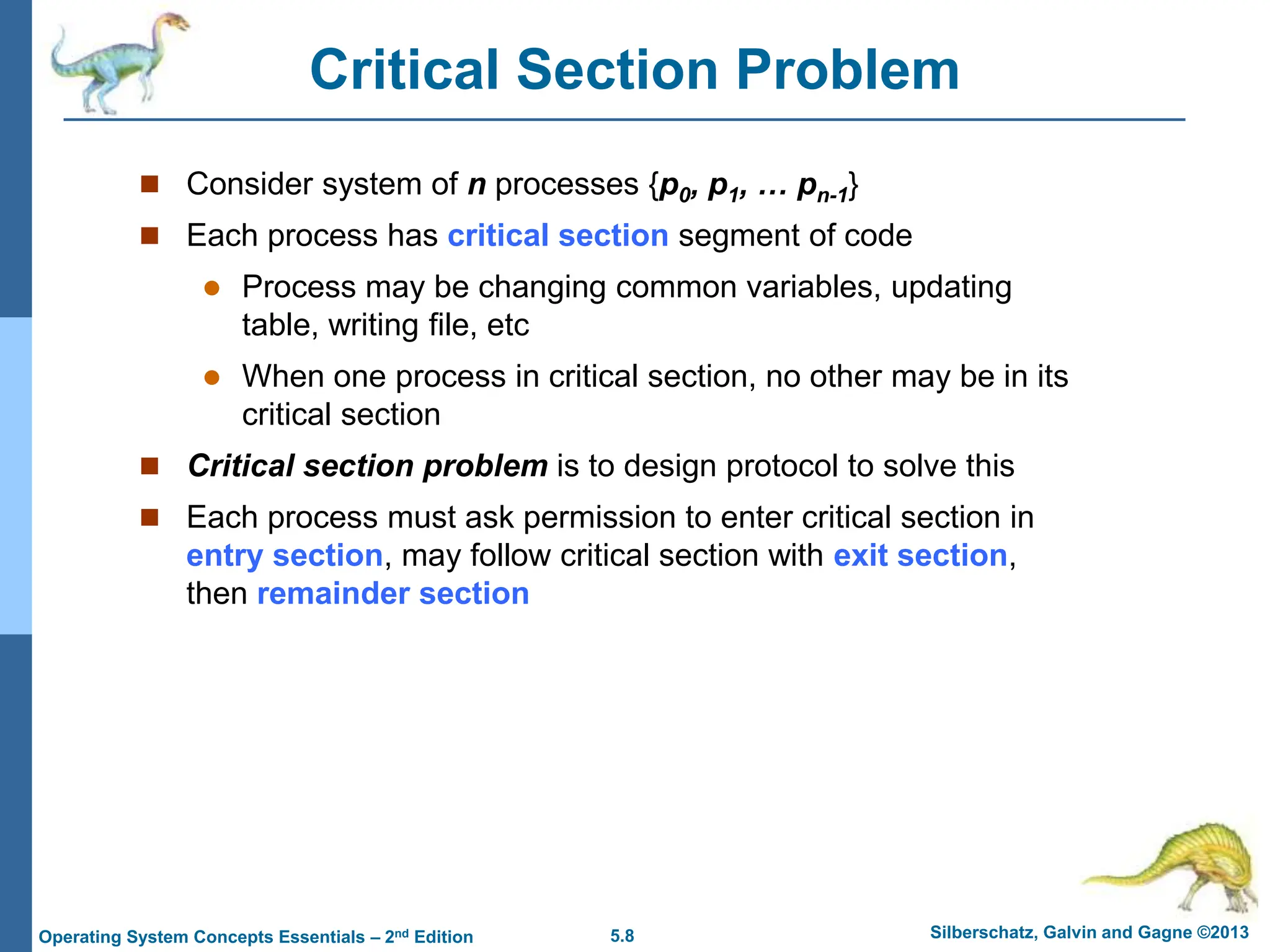
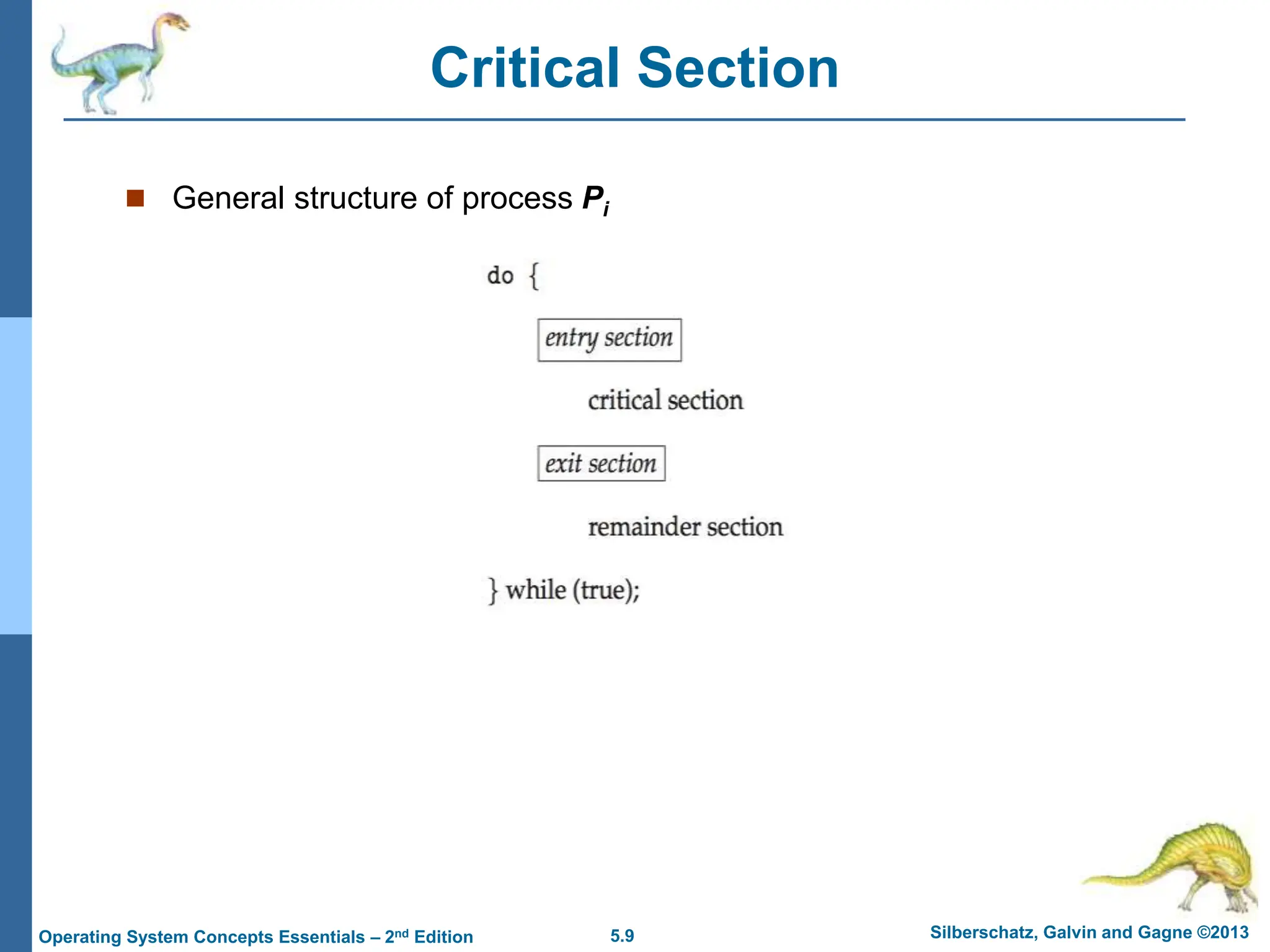
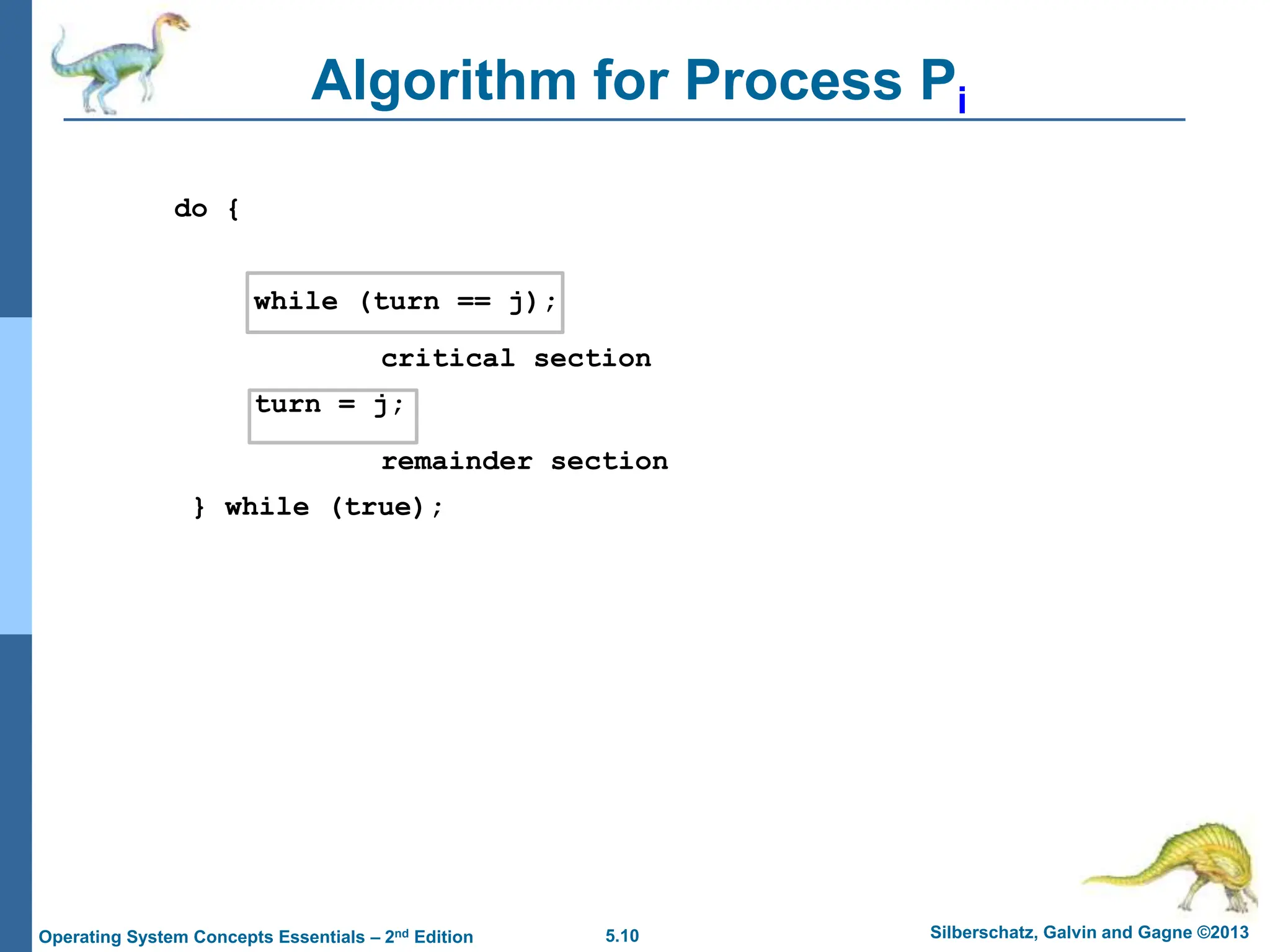
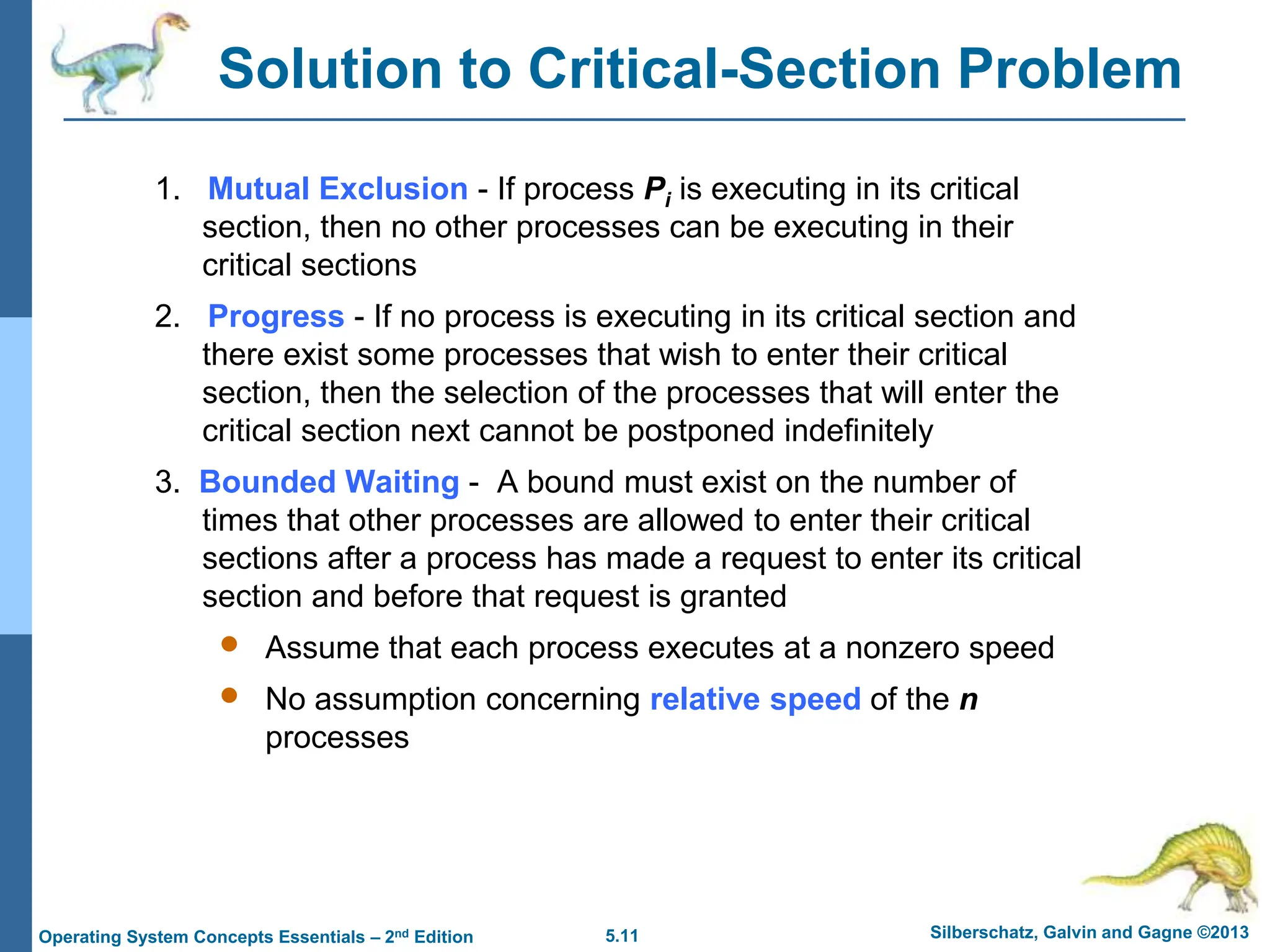
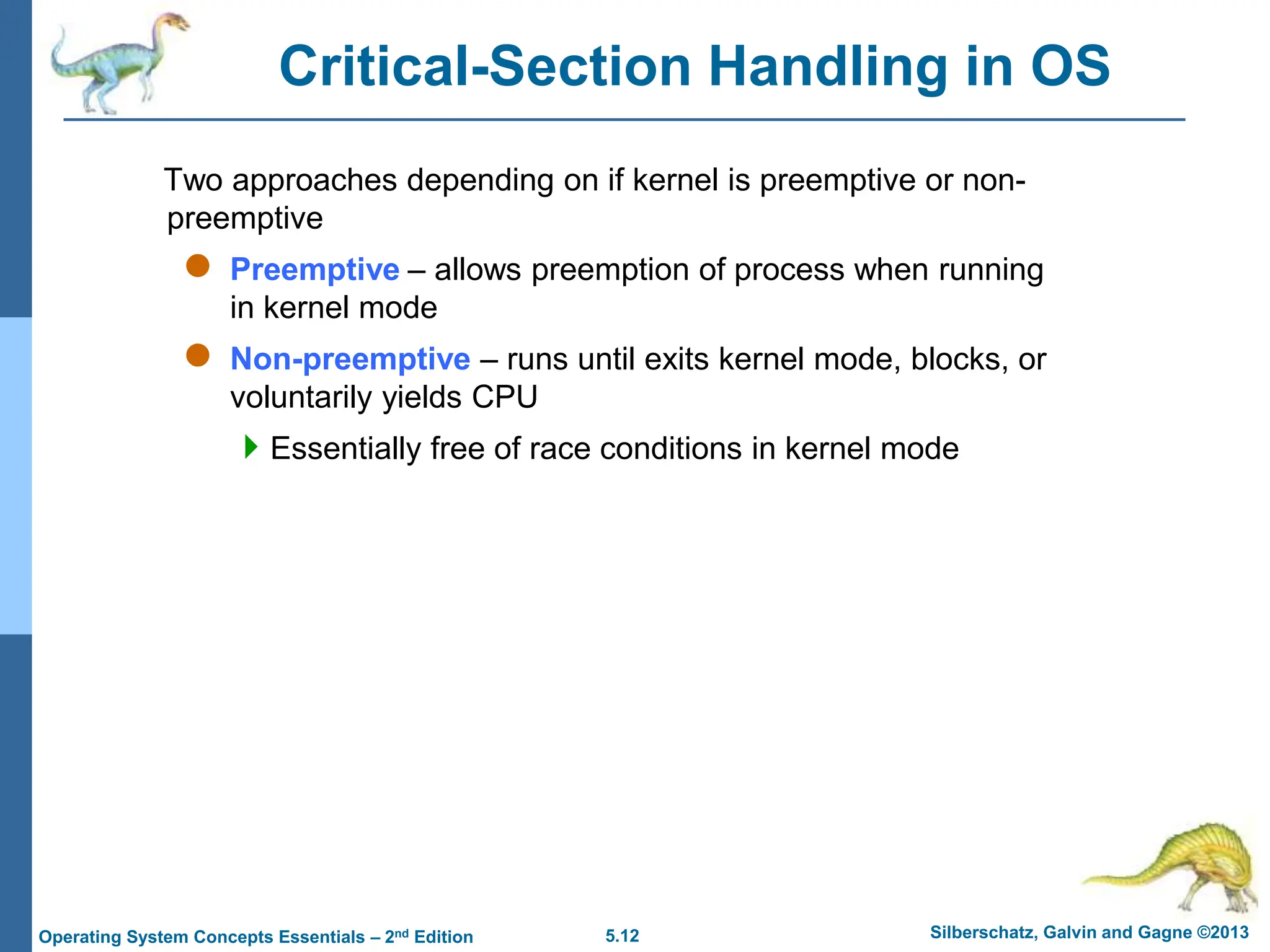
![5.13 Silberschatz, Galvin and Gagne ©2013
Operating System Concepts Essentials – 2nd Edition
Peterson’s Solution
Good algorithmic description of solving the problem
Two process solution
Assume that the load and store machine-language
instructions are atomic; that is, cannot be interrupted
The two processes share two variables:
int turn;
Boolean flag[2]
The variable turn indicates whose turn it is to enter the critical
section
The flag array is used to indicate if a process is ready to enter
the critical section. flag[i] = true implies that process Pi is
ready!](https://image.slidesharecdn.com/ch5-240227052019-02aebb91/75/ch5-ppt-Operating-System-Ppt-for-ptu-student-13-2048.jpg)
![5.14 Silberschatz, Galvin and Gagne ©2013
Operating System Concepts Essentials – 2nd Edition
Algorithm for Process Pi
do {
flag[i] = true;
turn = j;
while (flag[j] && turn = = j);
critical section
flag[i] = false;
remainder section
} while (true);](https://image.slidesharecdn.com/ch5-240227052019-02aebb91/75/ch5-ppt-Operating-System-Ppt-for-ptu-student-14-2048.jpg)
![5.15 Silberschatz, Galvin and Gagne ©2013
Operating System Concepts Essentials – 2nd Edition
Peterson’s Solution (Cont.)
Provable that the three CS requirement are met:
1. Mutual exclusion is preserved
Pi enters CS only if:
either flag[j] = false or turn = i
2. Progress requirement is satisfied
3. Bounded-waiting requirement is met](https://image.slidesharecdn.com/ch5-240227052019-02aebb91/75/ch5-ppt-Operating-System-Ppt-for-ptu-student-15-2048.jpg)
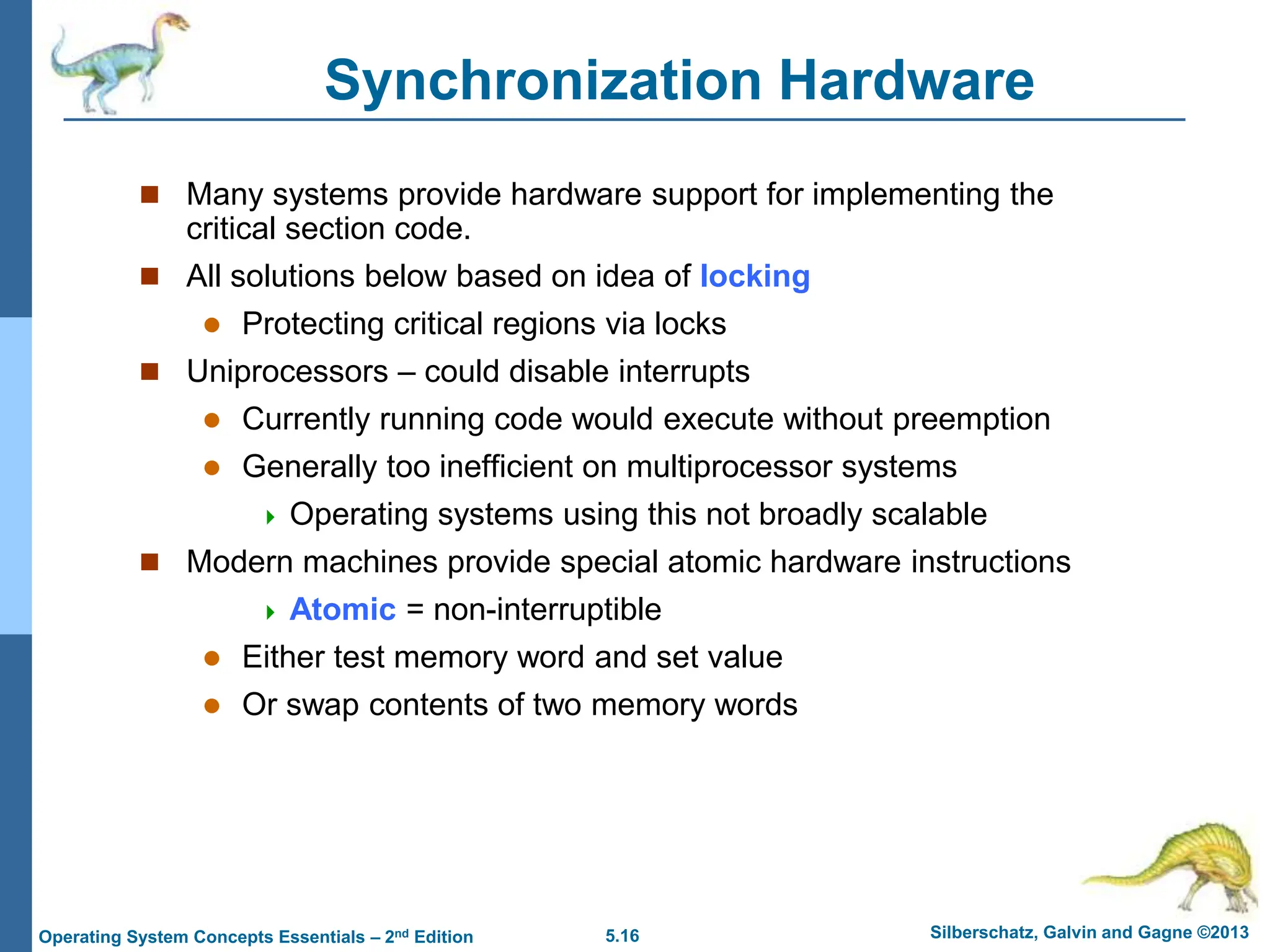
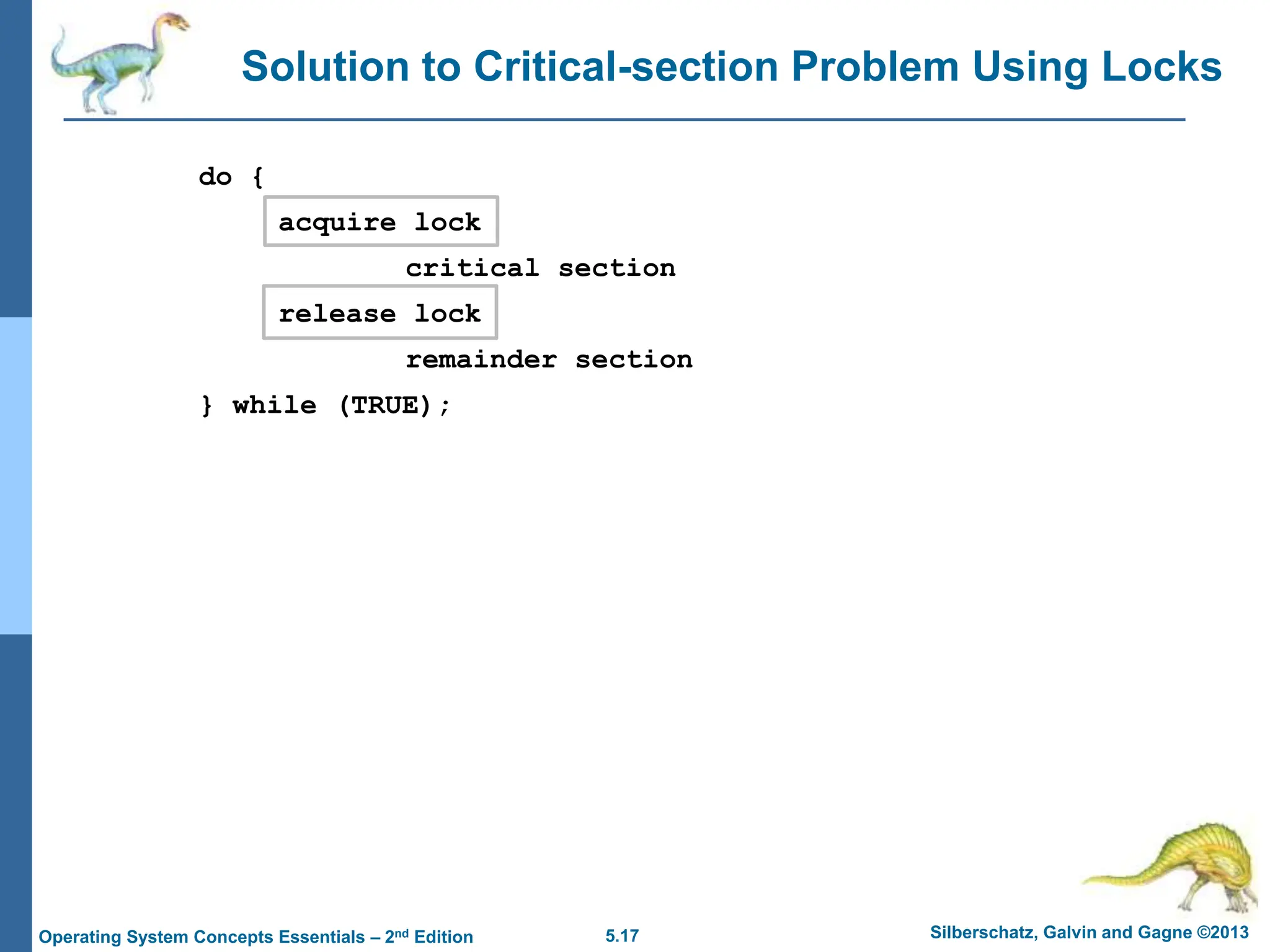

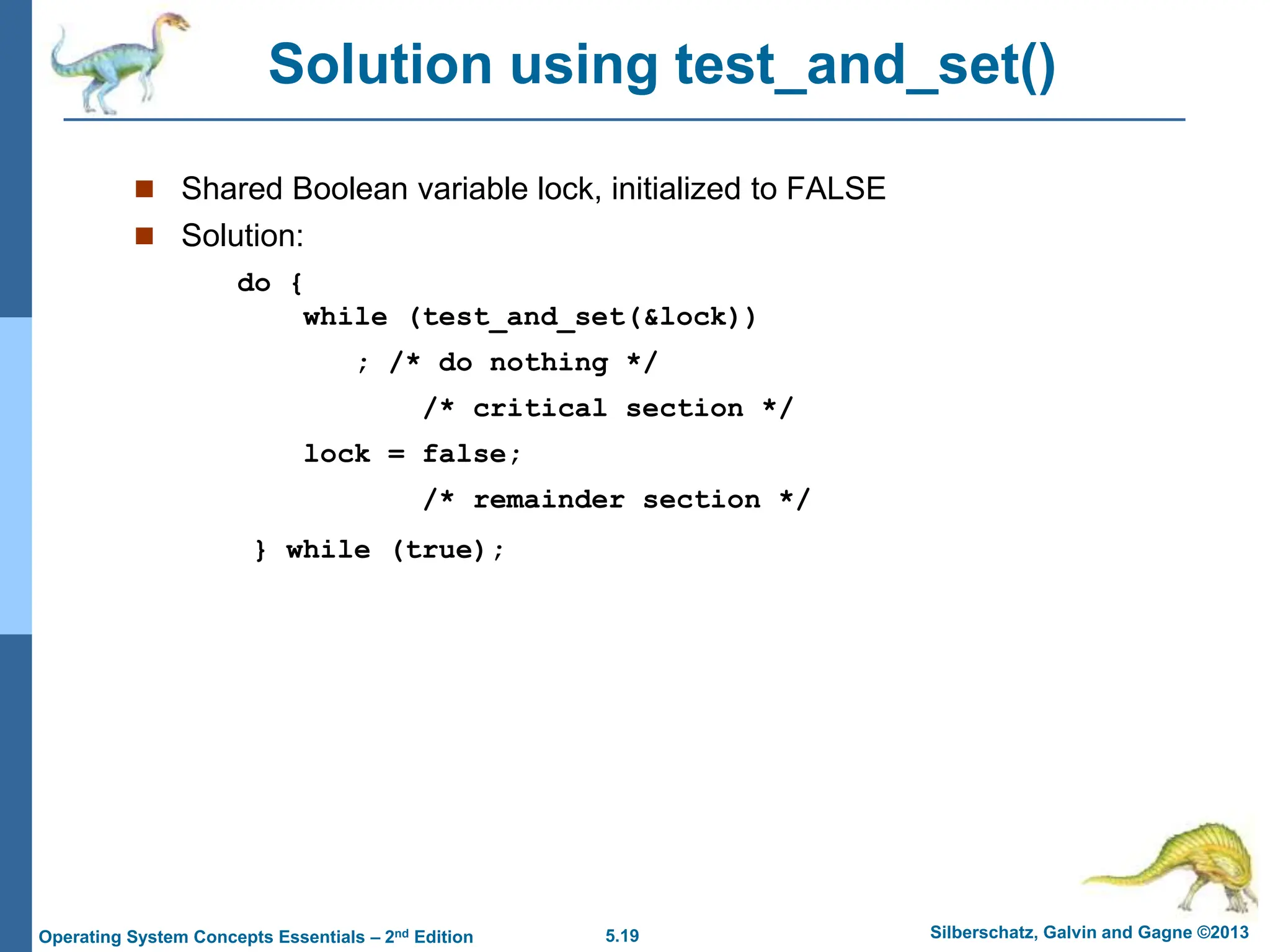


![5.22 Silberschatz, Galvin and Gagne ©2013
Operating System Concepts Essentials – 2nd Edition
Bounded-waiting Mutual Exclusion with test_and_set
do {
waiting[i] = true;
key = true;
while (waiting[i] && key)
key = test_and_set(&lock);
waiting[i] = false;
/* critical section */
j = (i + 1) % n;
while ((j != i) && !waiting[j])
j = (j + 1) % n;
if (j == i)
lock = false;
else
waiting[j] = false;
/* remainder section */
} while (true);](https://image.slidesharecdn.com/ch5-240227052019-02aebb91/75/ch5-ppt-Operating-System-Ppt-for-ptu-student-22-2048.jpg)
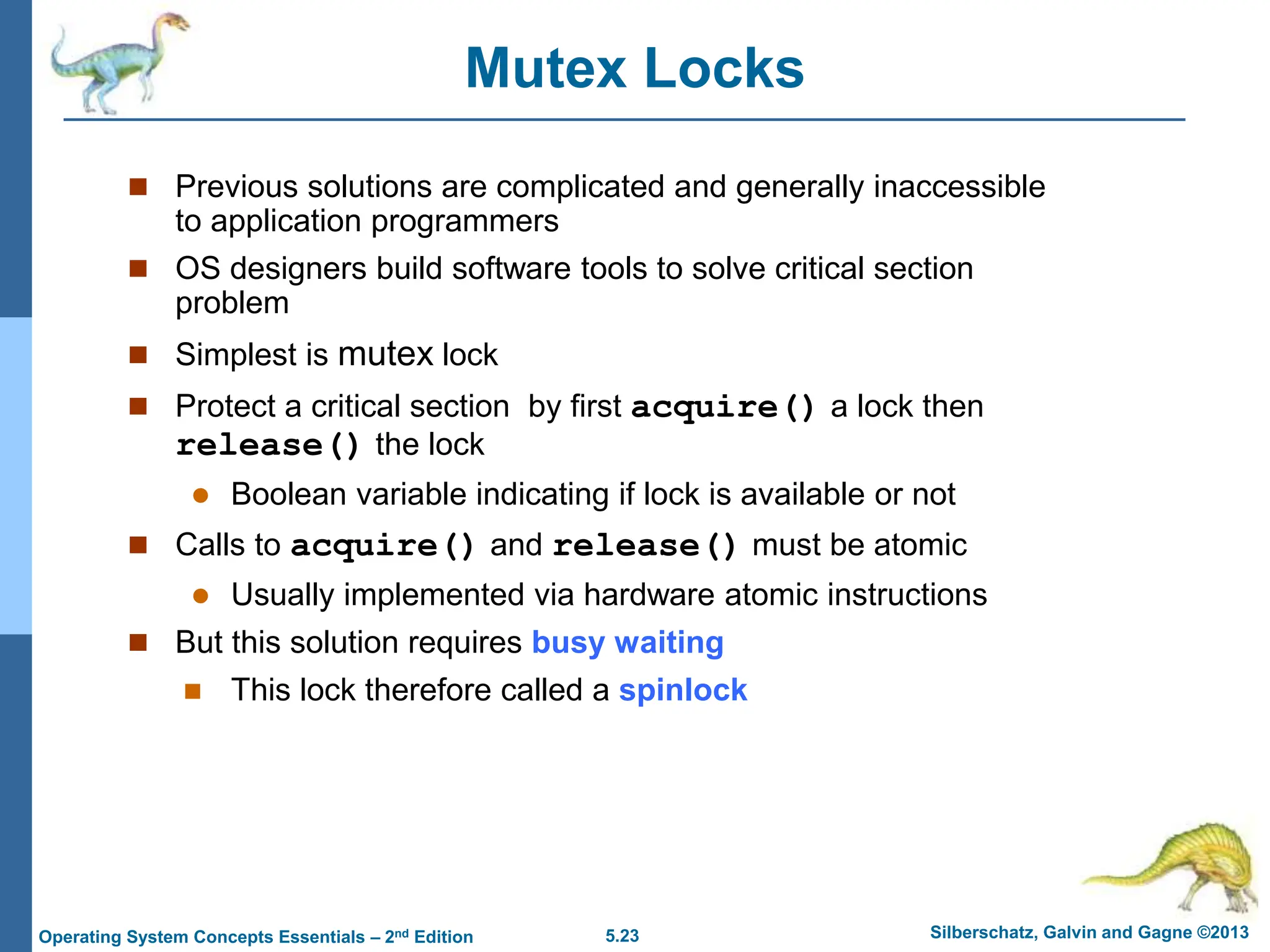
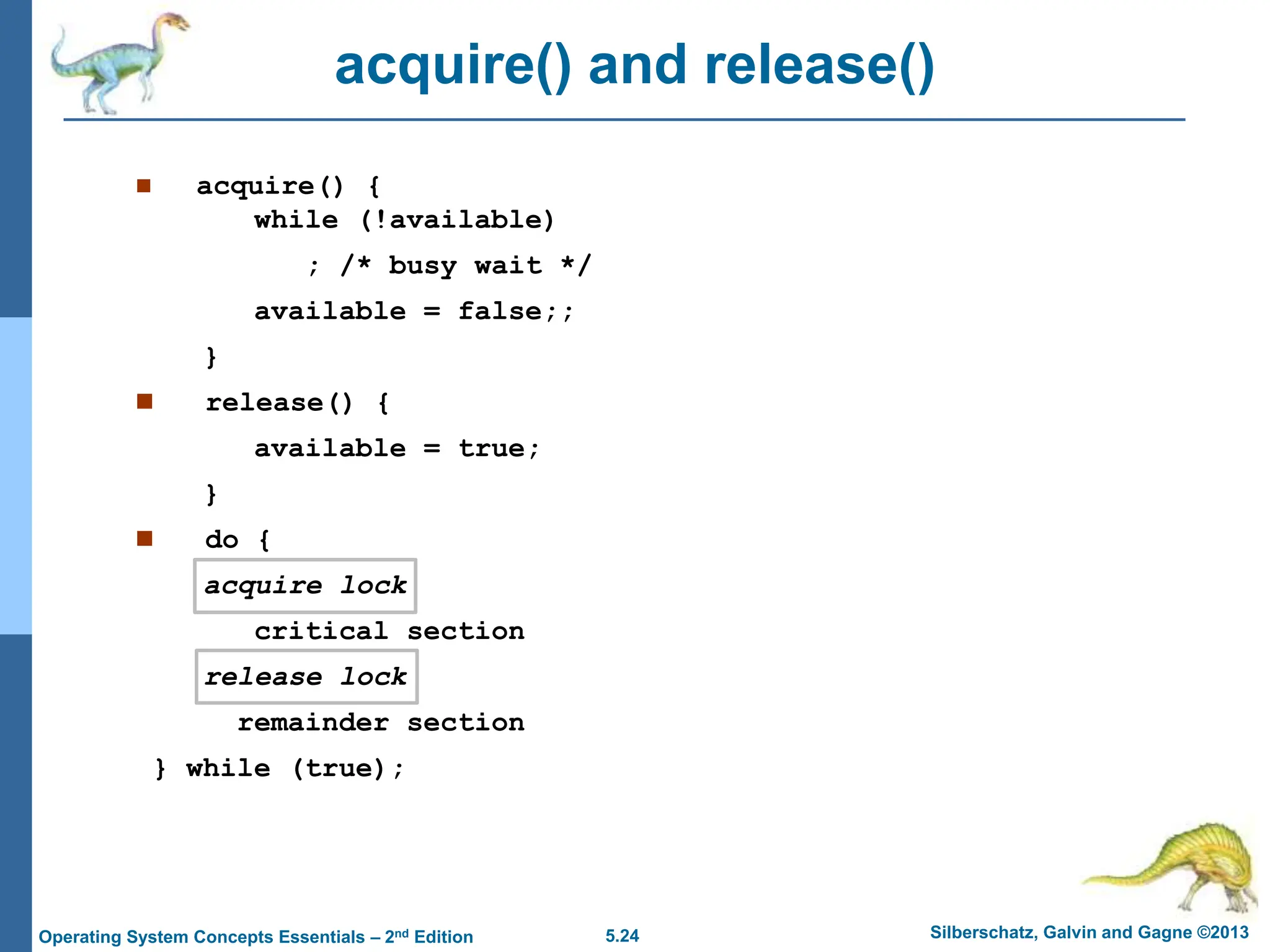
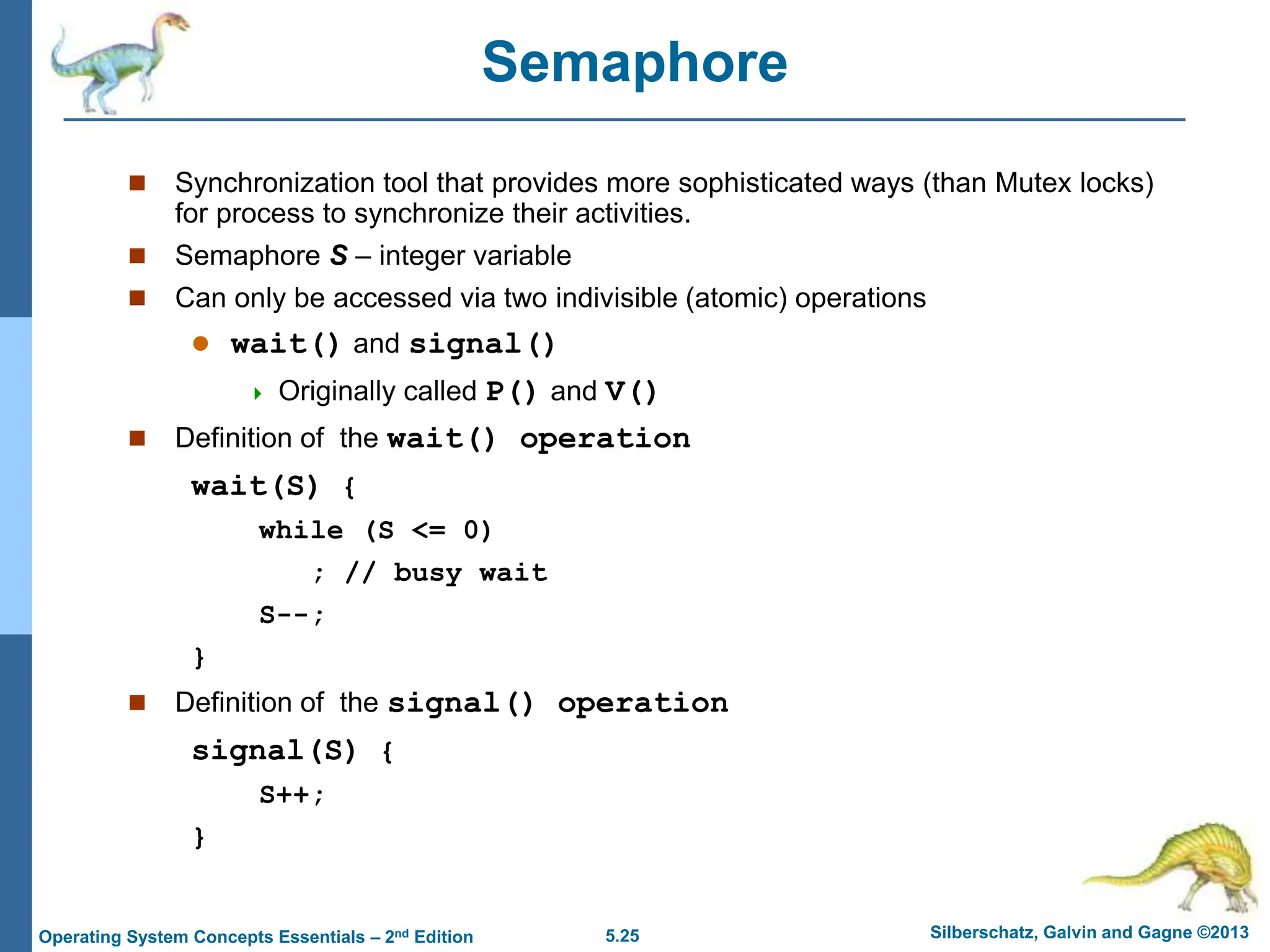
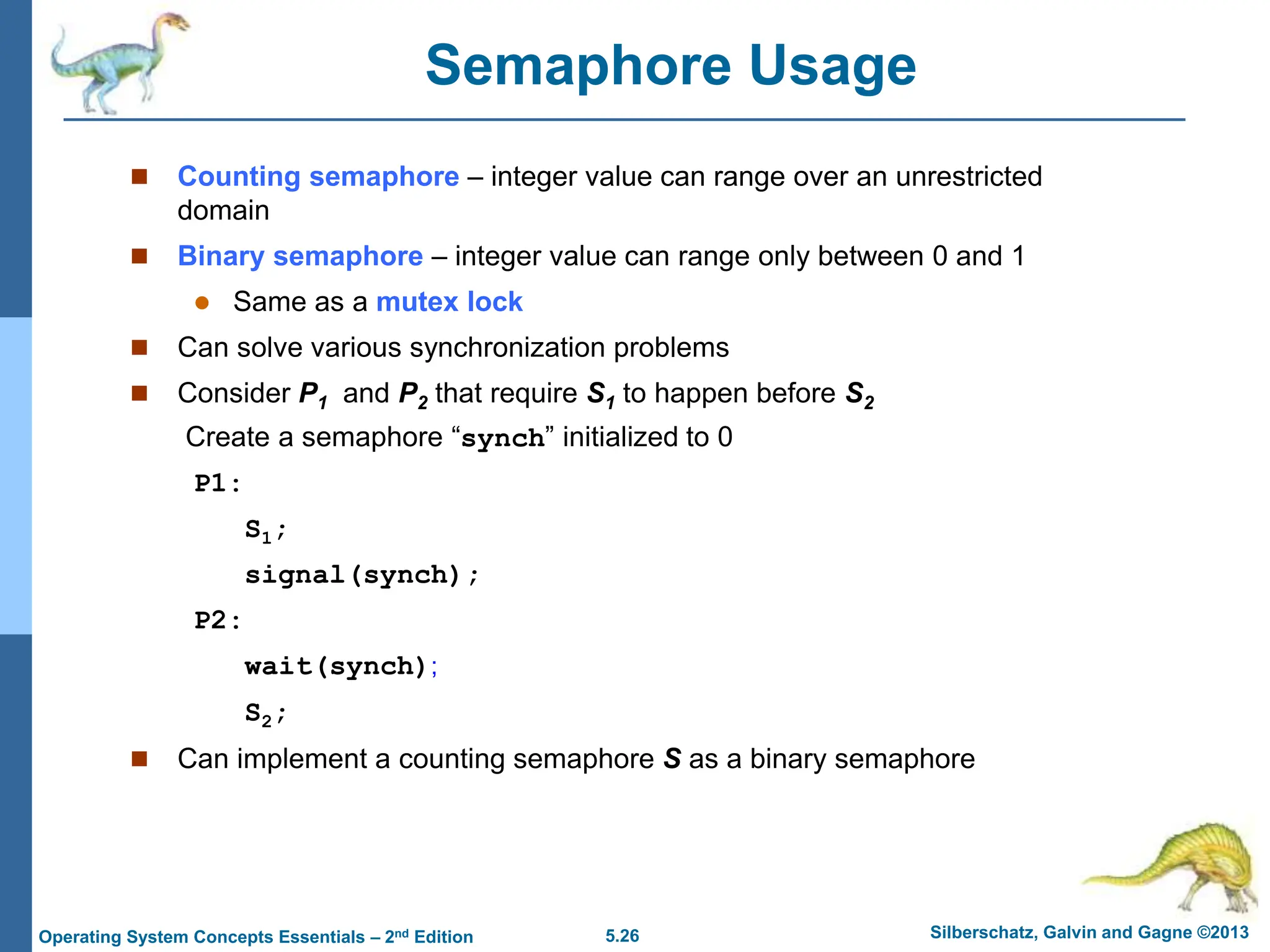
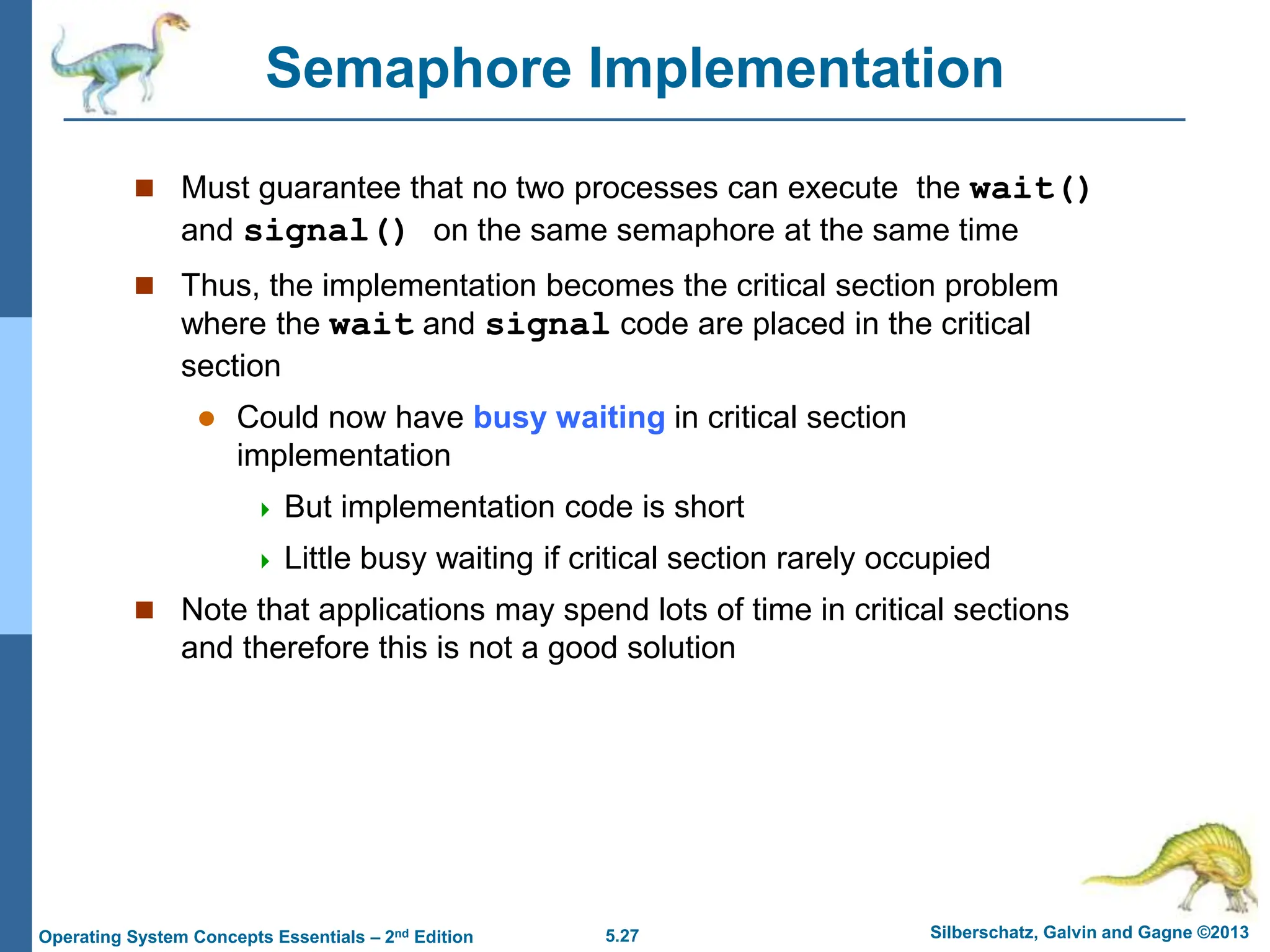

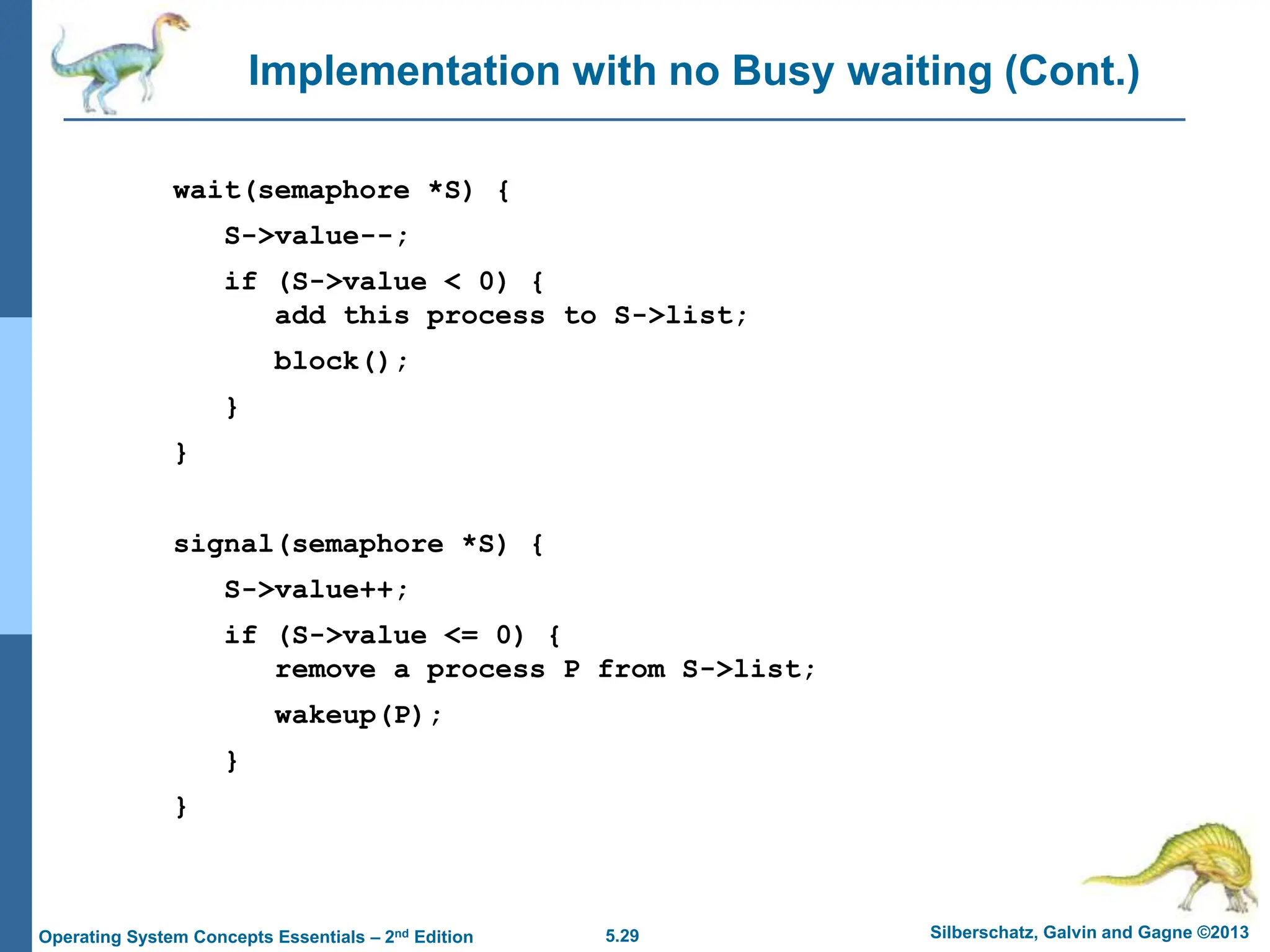
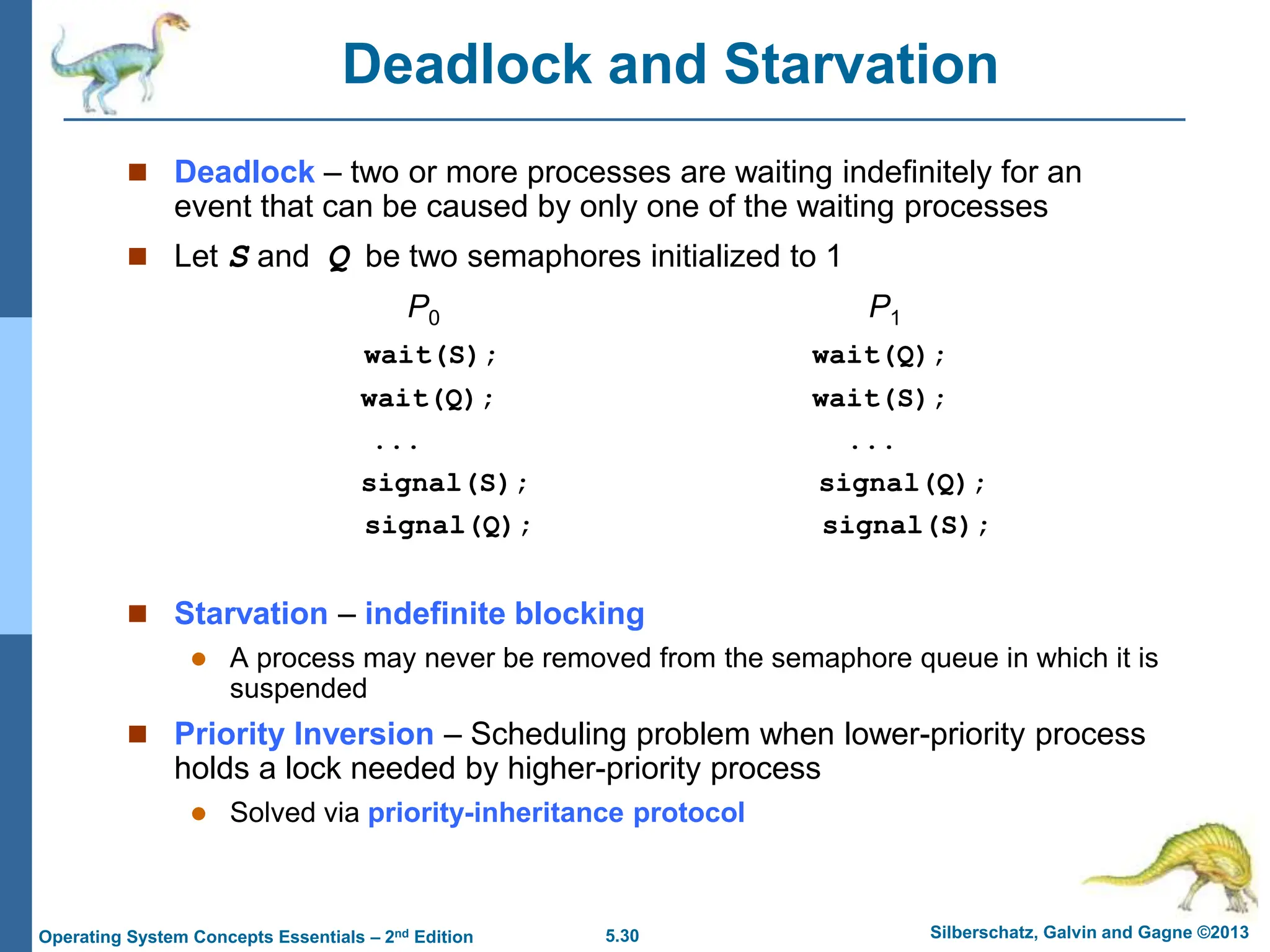
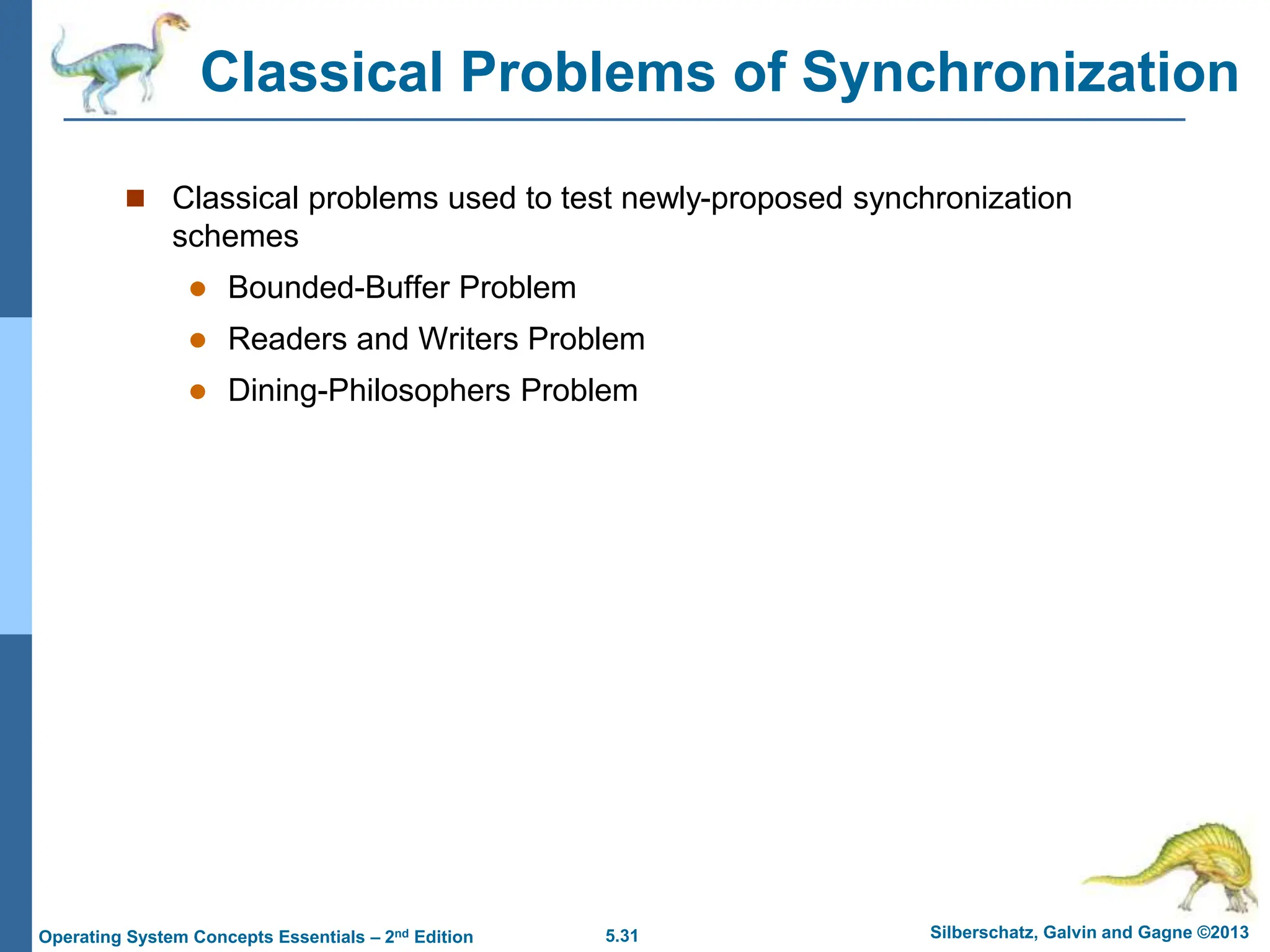
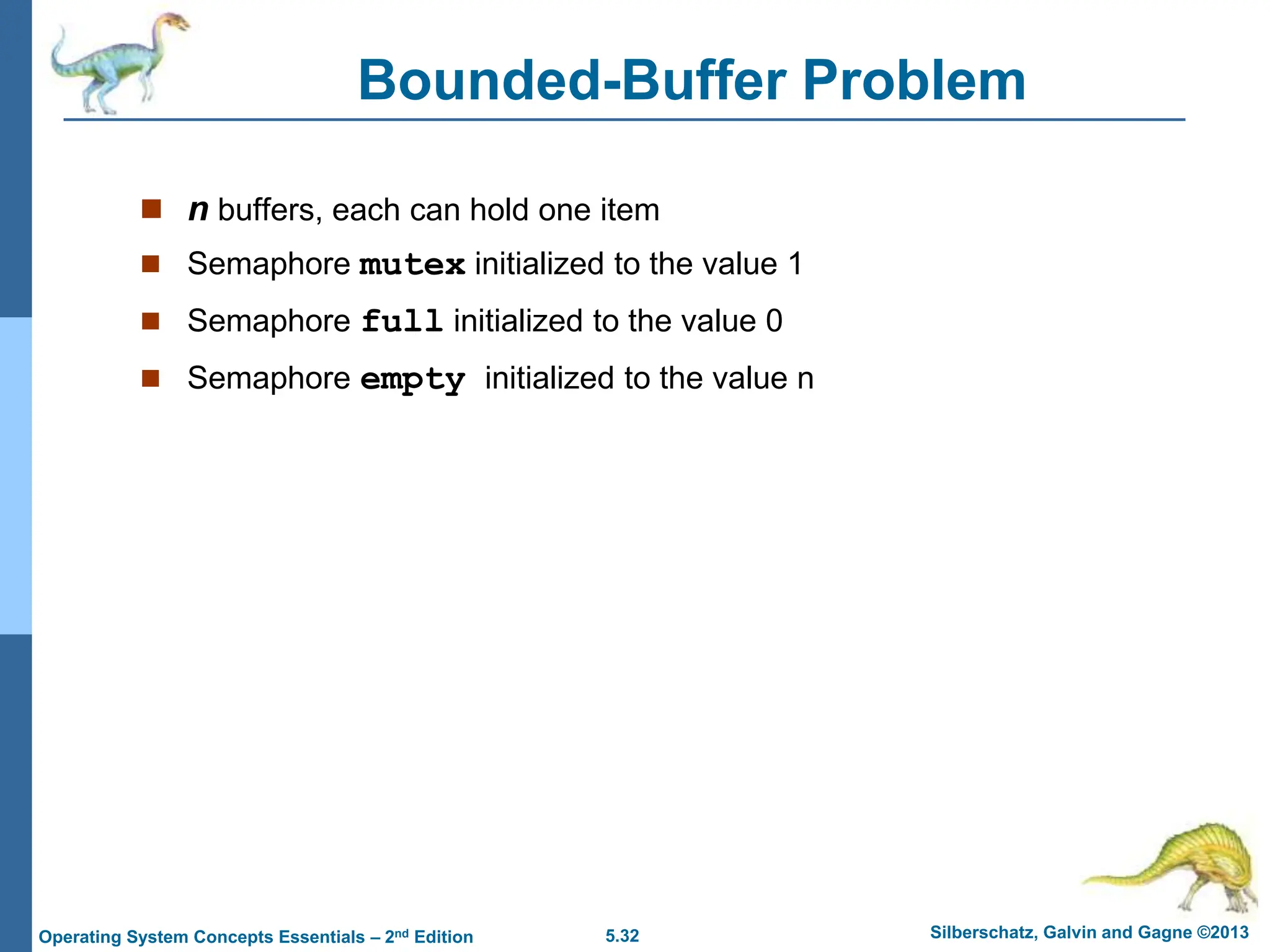
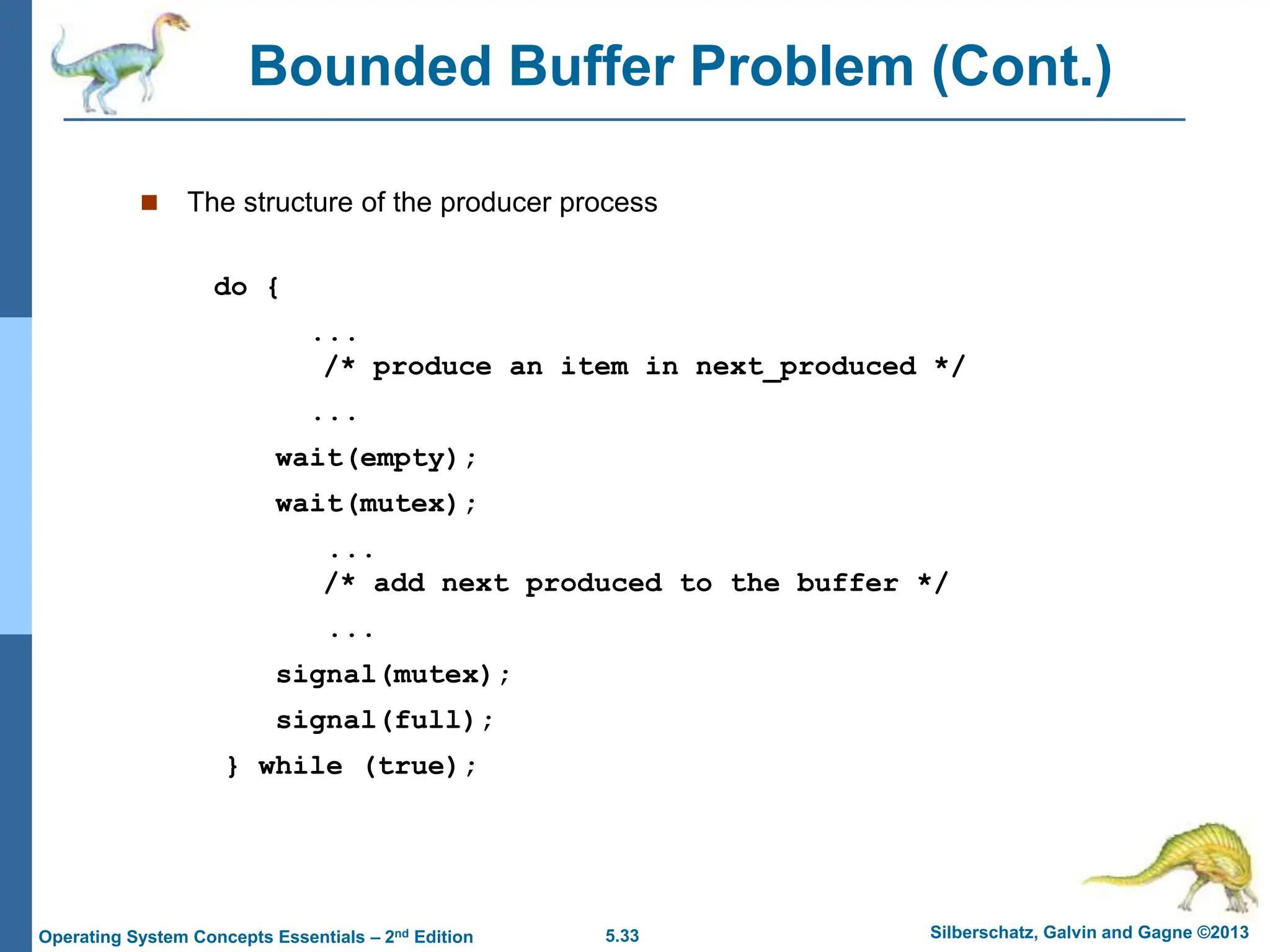

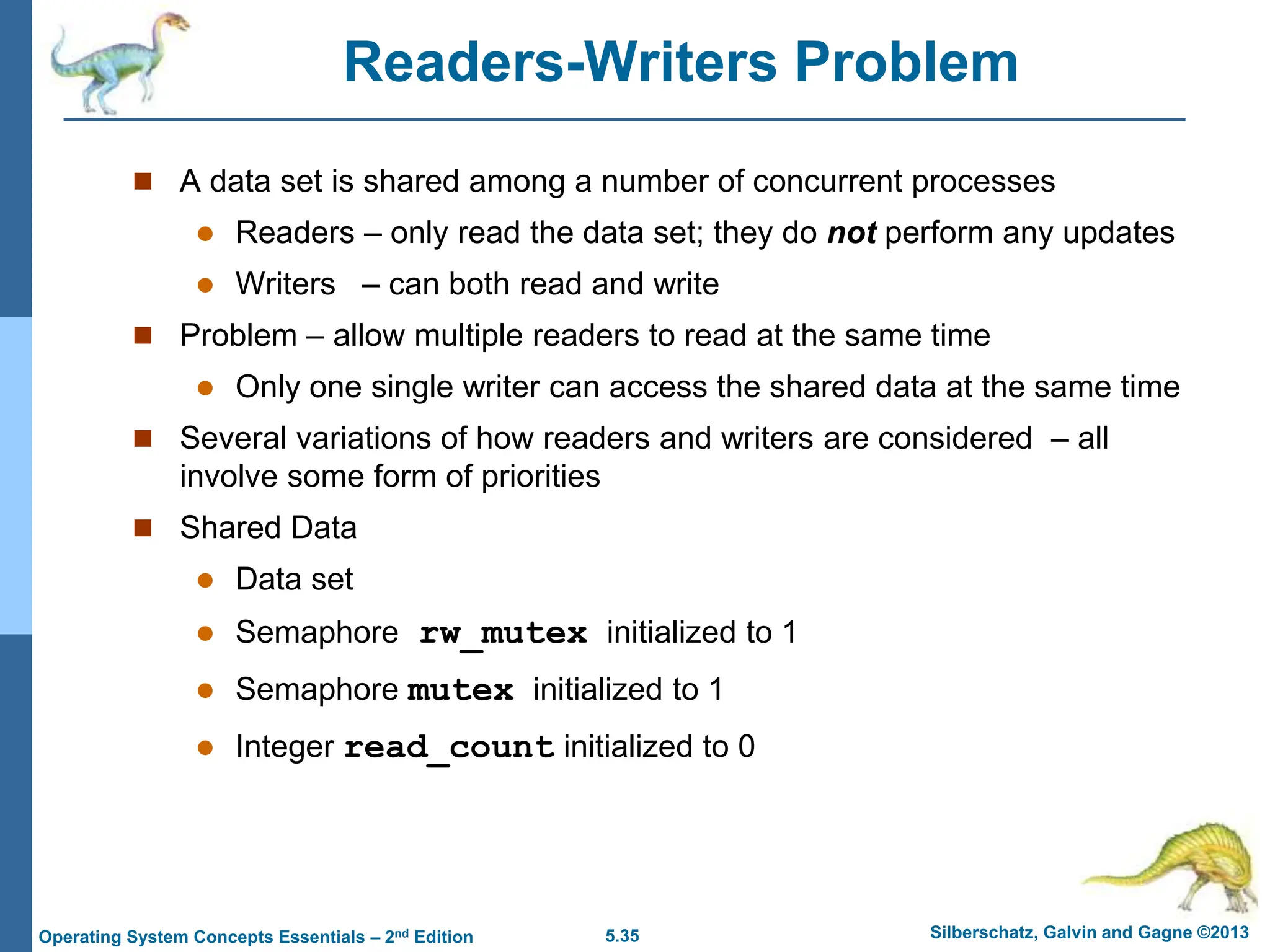
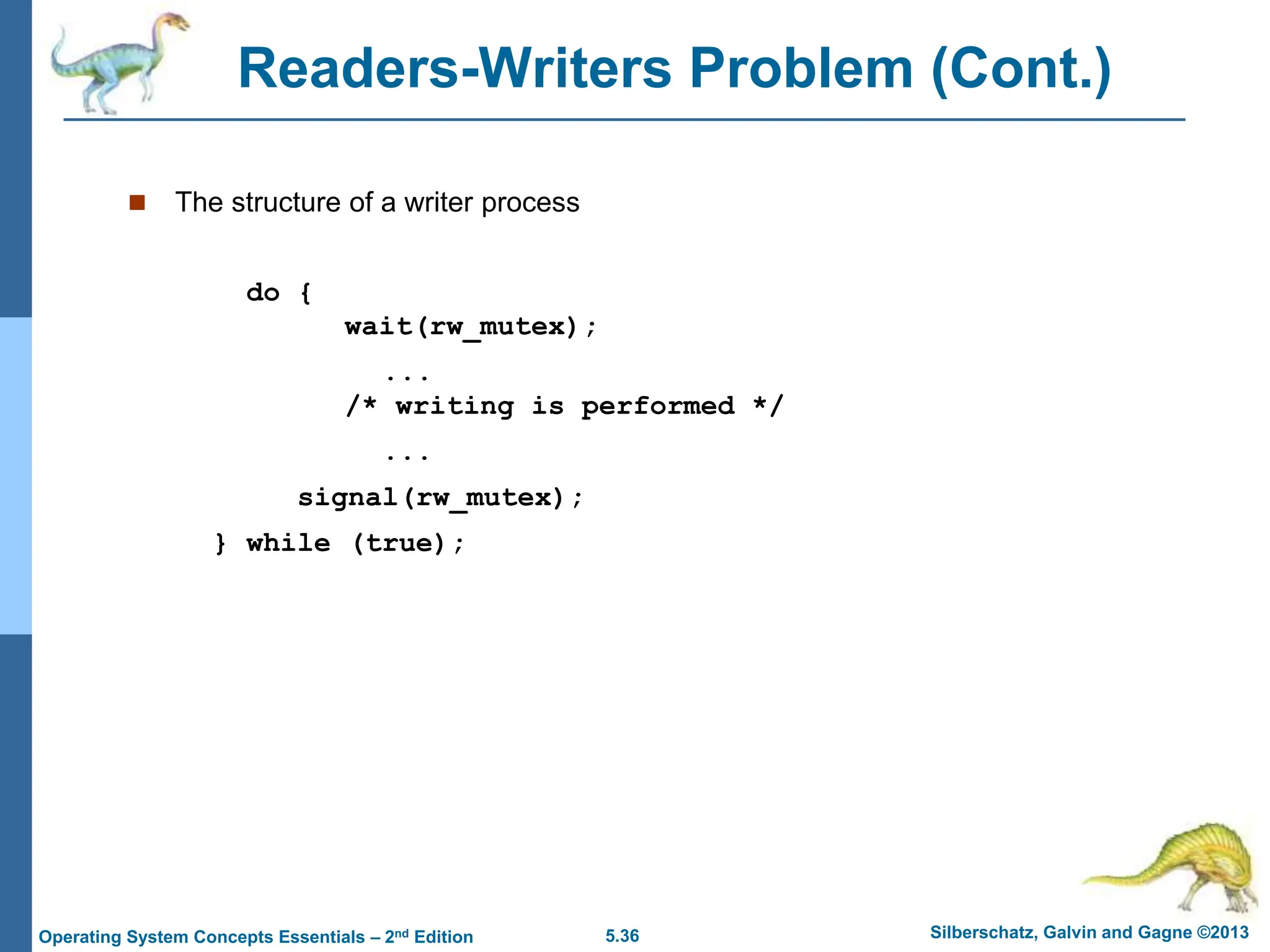

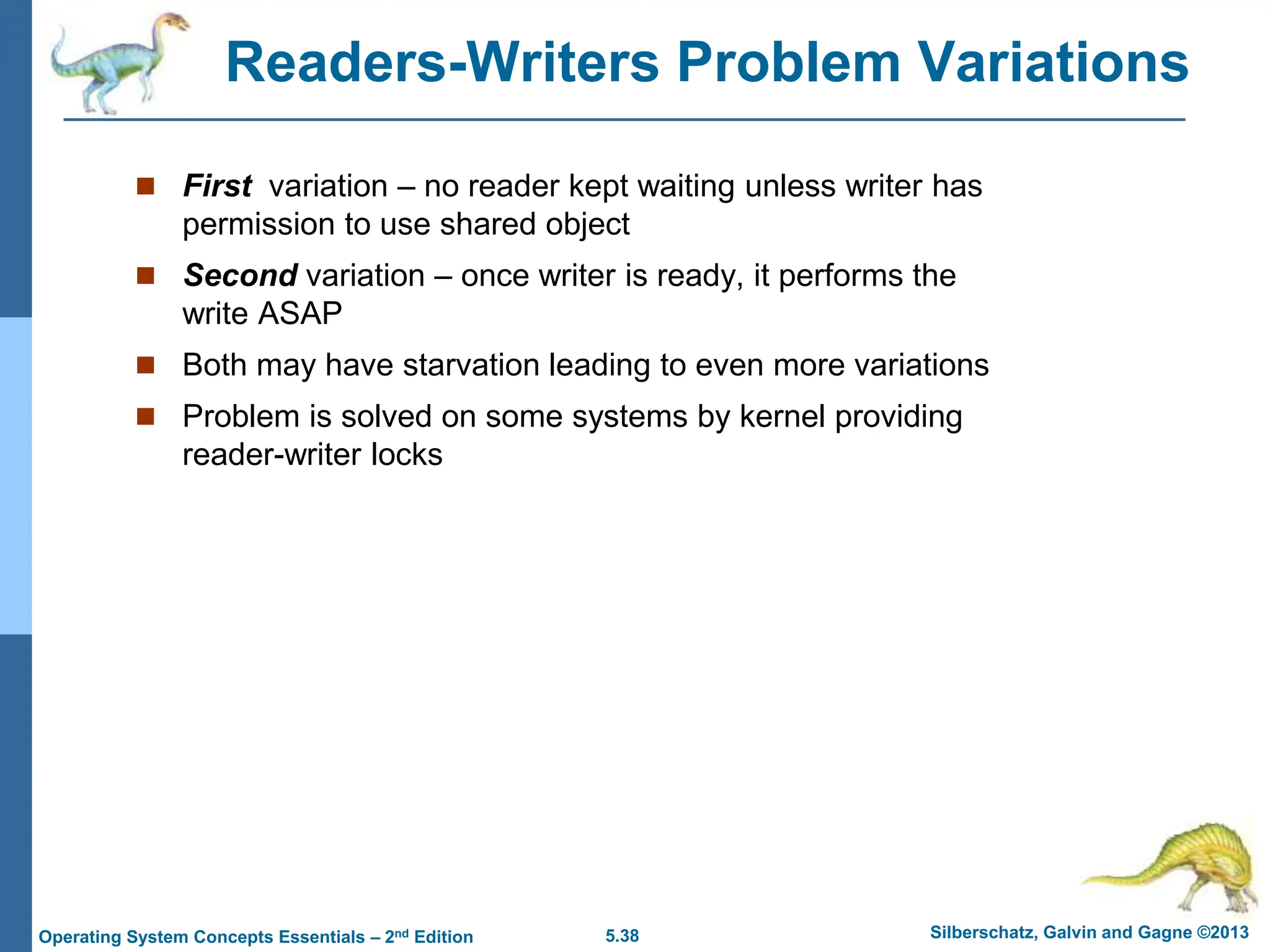
![5.39 Silberschatz, Galvin and Gagne ©2013
Operating System Concepts Essentials – 2nd Edition
Dining-Philosophers Problem
Philosophers spend their lives alternating thinking and eating
Don’t interact with their neighbors, occasionally try to pick up 2
chopsticks (one at a time) to eat from bowl
Need both to eat, then release both when done
In the case of 5 philosophers
Shared data
Bowl of rice (data set)
Semaphore chopstick [5] initialized to 1](https://image.slidesharecdn.com/ch5-240227052019-02aebb91/75/ch5-ppt-Operating-System-Ppt-for-ptu-student-39-2048.jpg)
![5.40 Silberschatz, Galvin and Gagne ©2013
Operating System Concepts Essentials – 2nd Edition
Dining-Philosophers Problem Algorithm
The structure of Philosopher i:
do {
wait (chopstick[i] );
wait (chopStick[ (i + 1) % 5] );
// eat
signal (chopstick[i] );
signal (chopstick[ (i + 1) % 5] );
// think
} while (TRUE);
What is the problem with this algorithm?](https://image.slidesharecdn.com/ch5-240227052019-02aebb91/75/ch5-ppt-Operating-System-Ppt-for-ptu-student-40-2048.jpg)
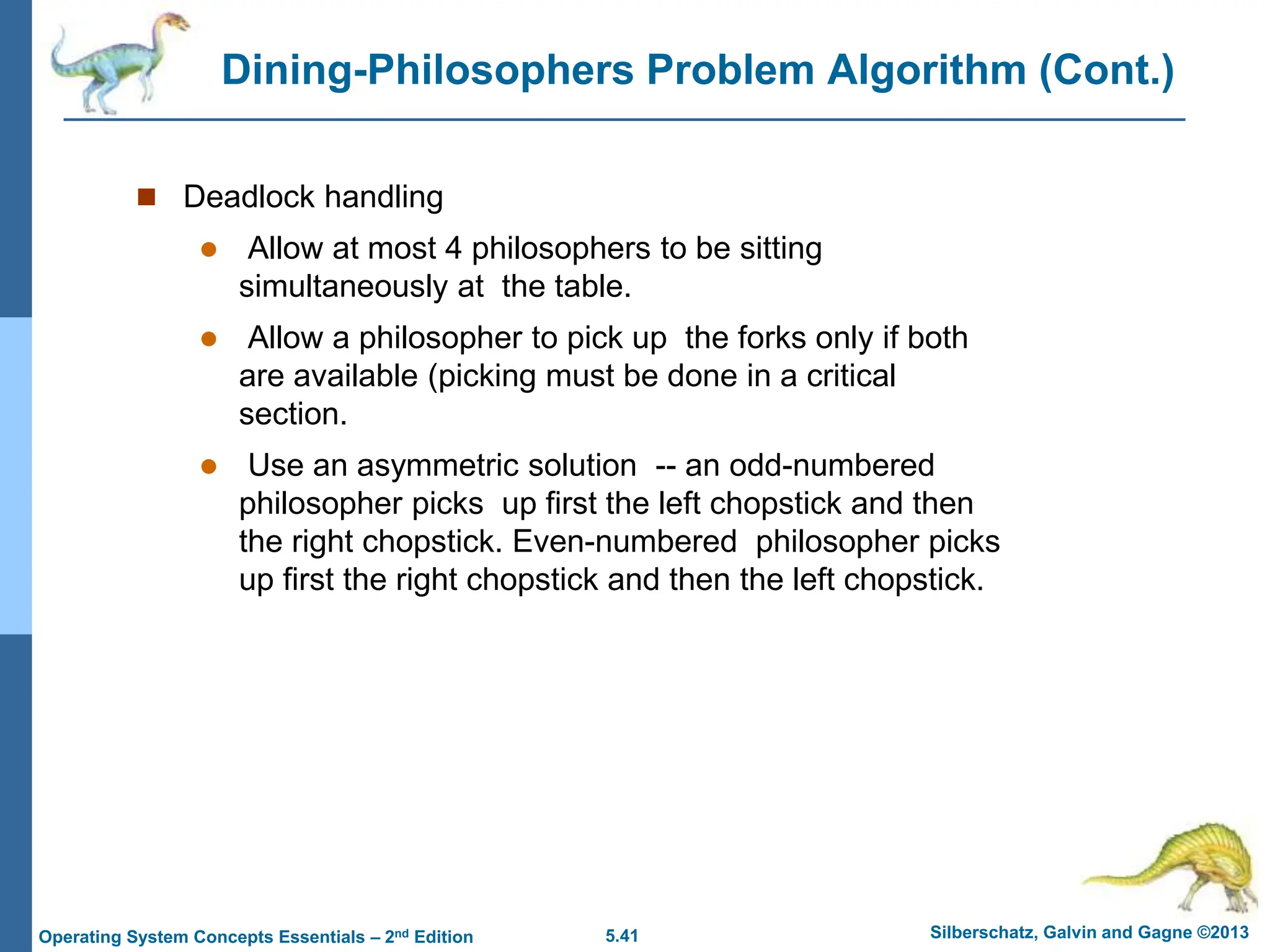
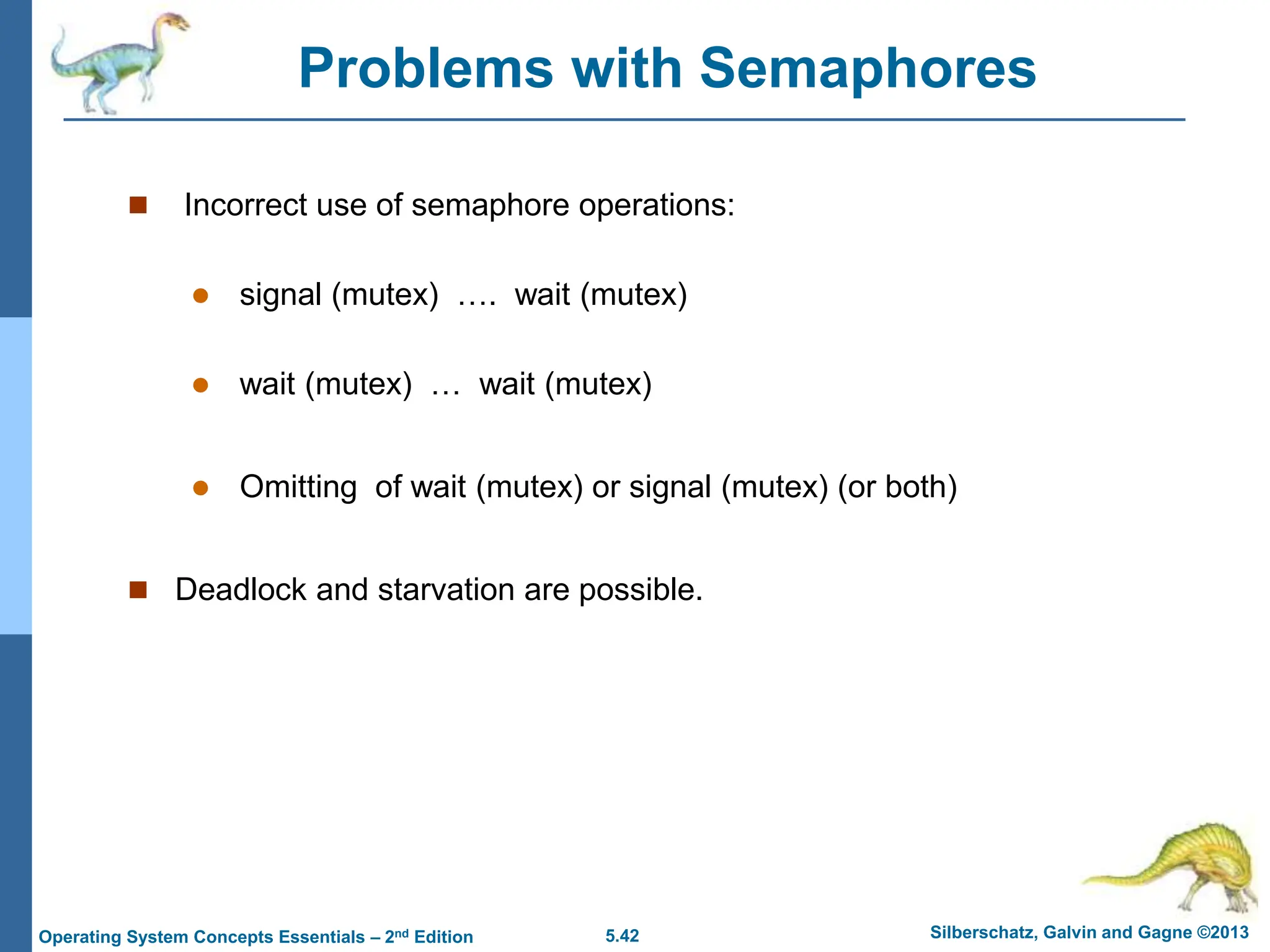
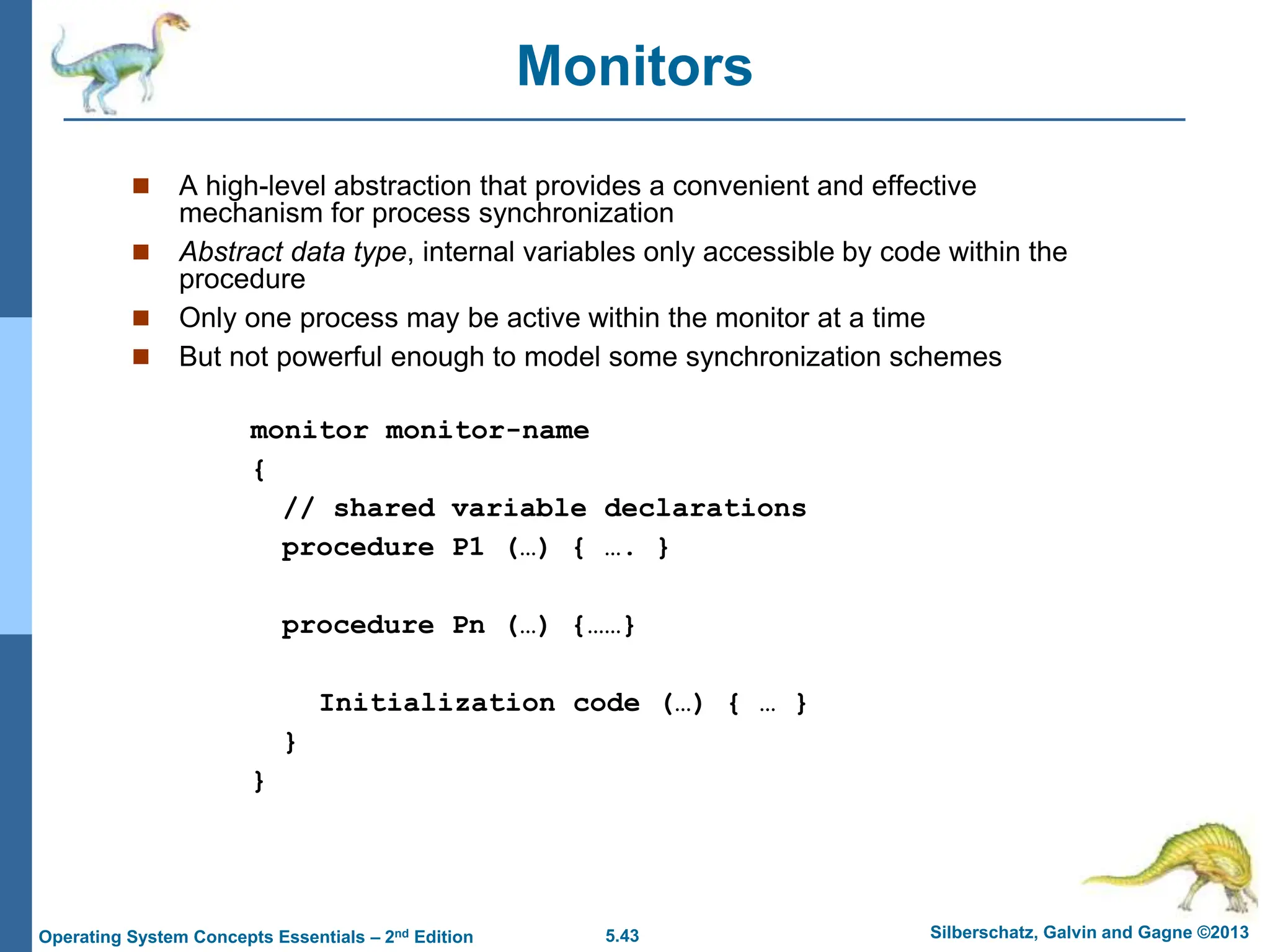
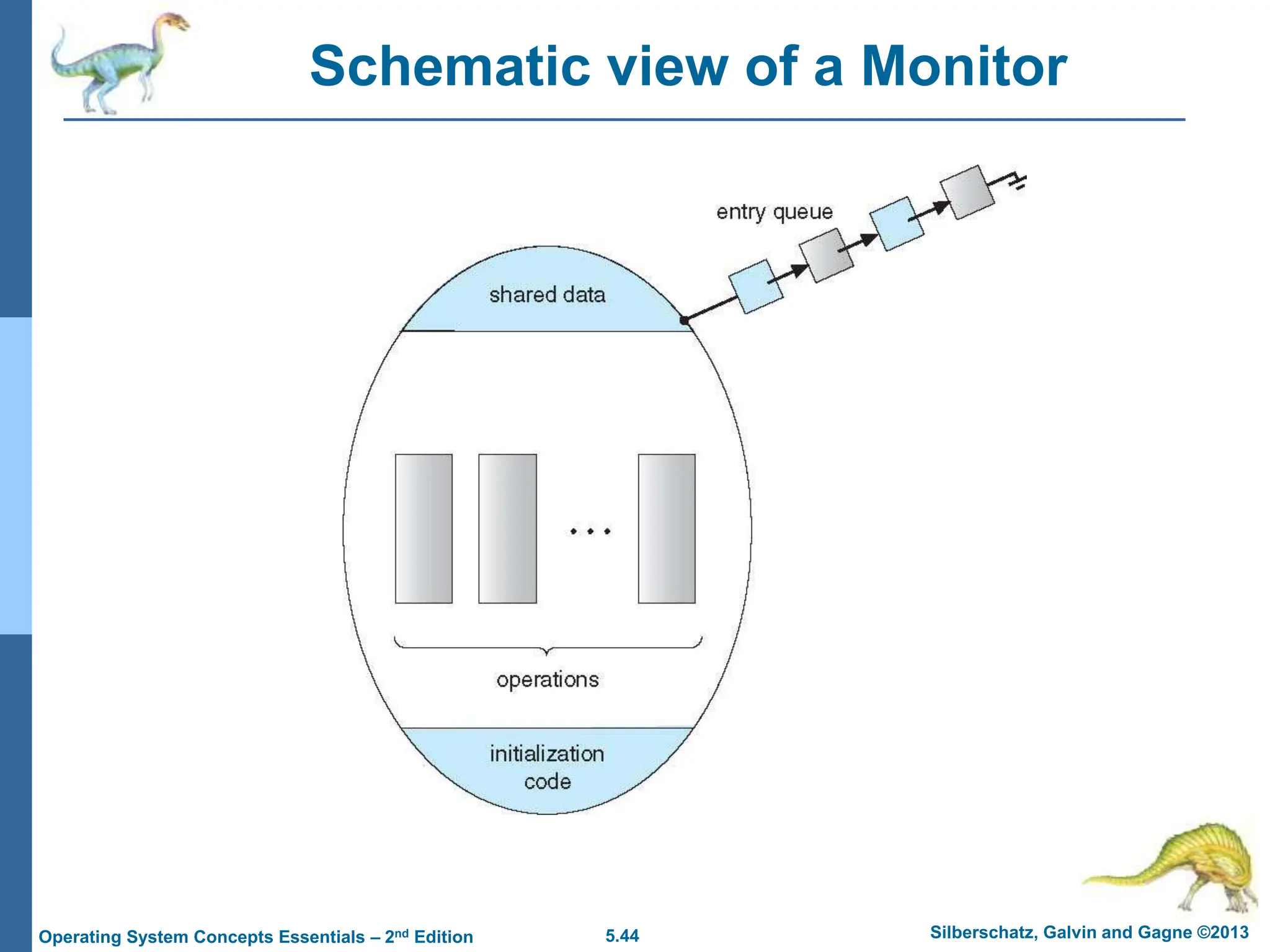
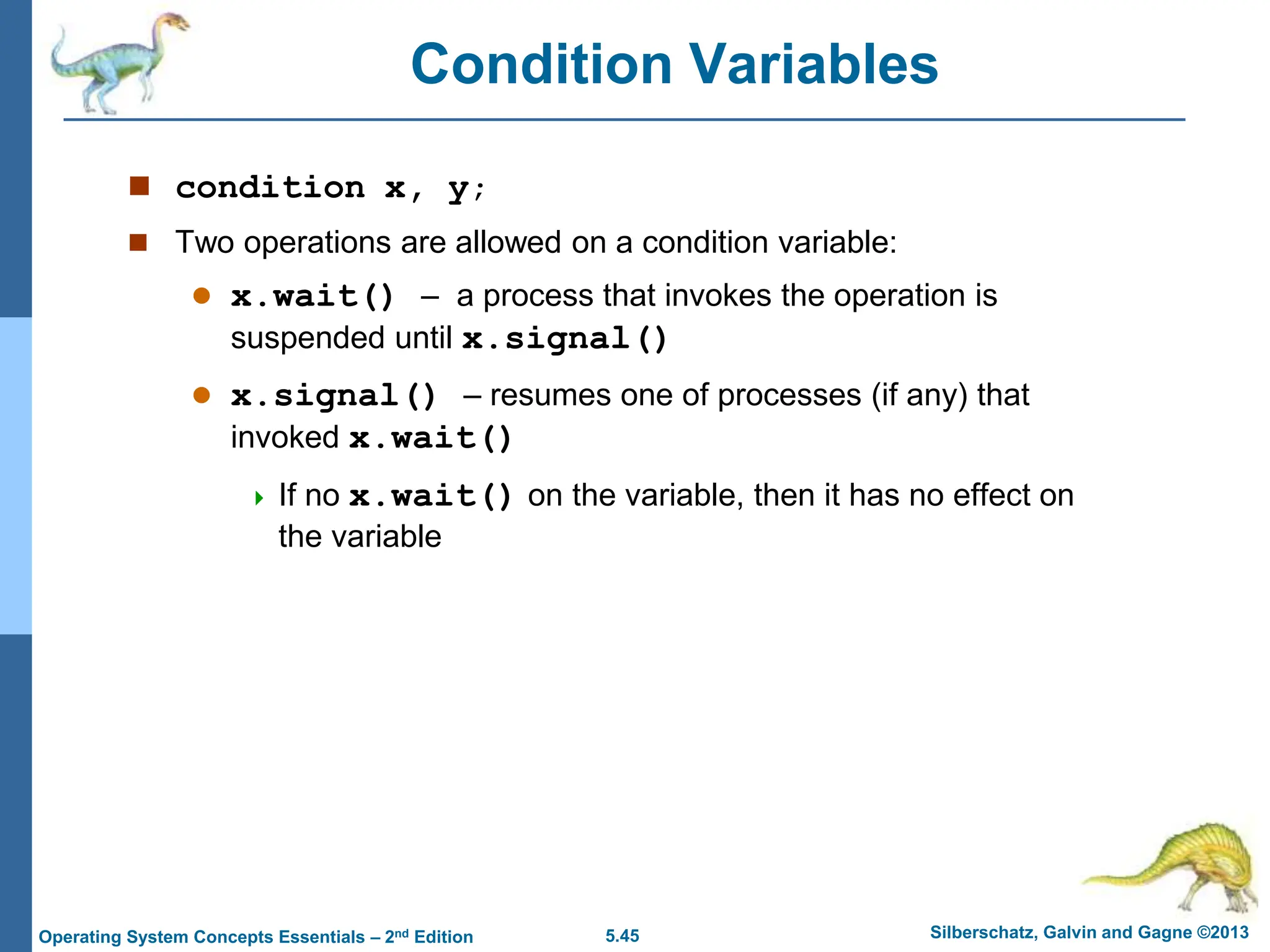
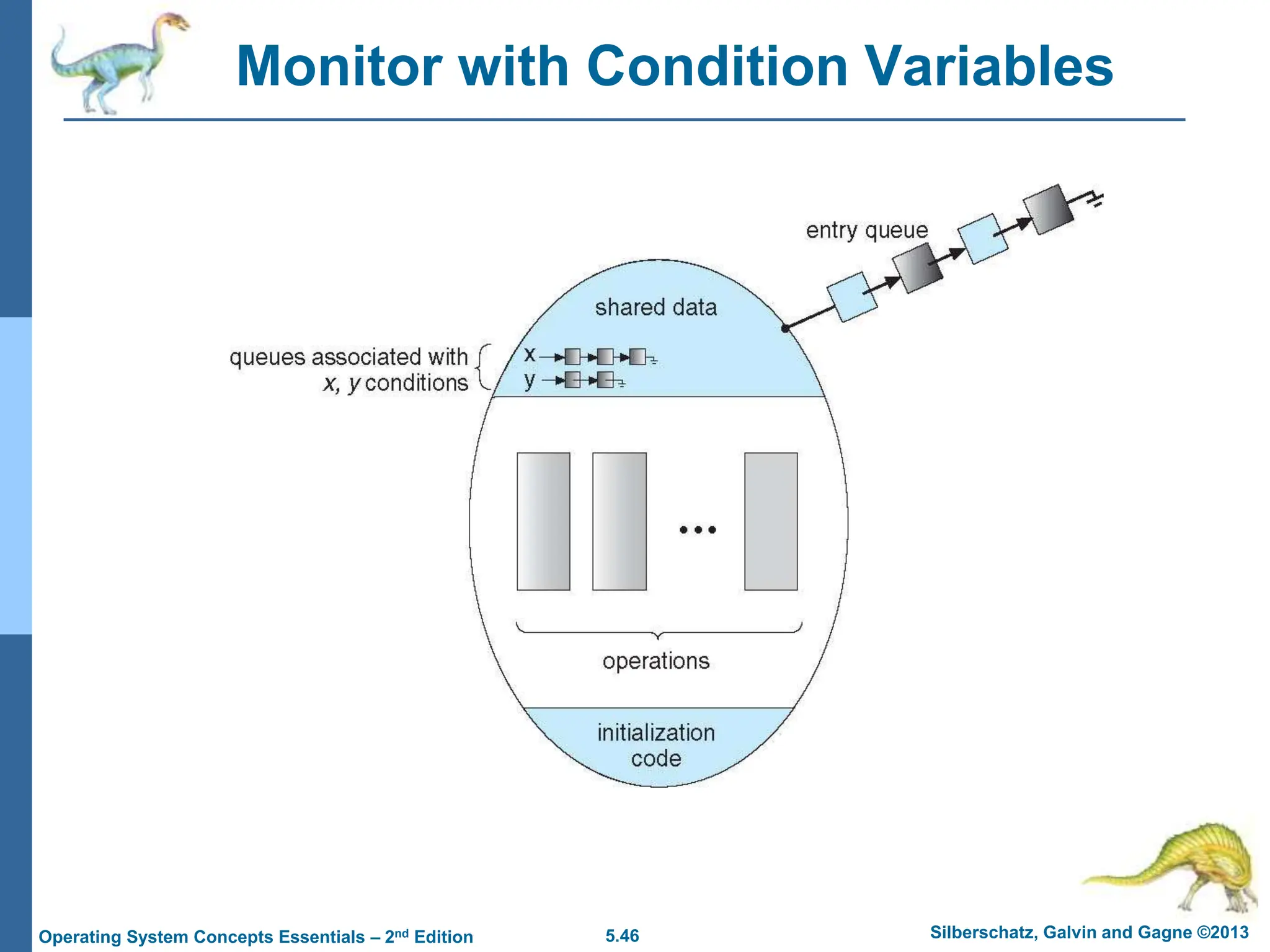

![5.48 Silberschatz, Galvin and Gagne ©2013
Operating System Concepts Essentials – 2nd Edition
Monitor Solution to Dining Philosophers
monitor DiningPhilosophers
{
enum { THINKING; HUNGRY, EATING) state [5] ;
condition self [5];
void pickup (int i) {
state[i] = HUNGRY;
test(i);
if (state[i] != EATING) self[i].wait;
}
void putdown (int i) {
state[i] = THINKING;
// test left and right neighbors
test((i + 4) % 5);
test((i + 1) % 5);
}](https://image.slidesharecdn.com/ch5-240227052019-02aebb91/75/ch5-ppt-Operating-System-Ppt-for-ptu-student-48-2048.jpg)
![5.49 Silberschatz, Galvin and Gagne ©2013
Operating System Concepts Essentials – 2nd Edition
Solution to Dining Philosophers (Cont.)
void test (int i) {
if ((state[(i + 4) % 5] != EATING) &&
(state[i] == HUNGRY) &&
(state[(i + 1) % 5] != EATING) ) {
state[i] = EATING ;
self[i].signal () ;
}
}
initialization_code() {
for (int i = 0; i < 5; i++)
state[i] = THINKING;
}
}](https://image.slidesharecdn.com/ch5-240227052019-02aebb91/75/ch5-ppt-Operating-System-Ppt-for-ptu-student-49-2048.jpg)

